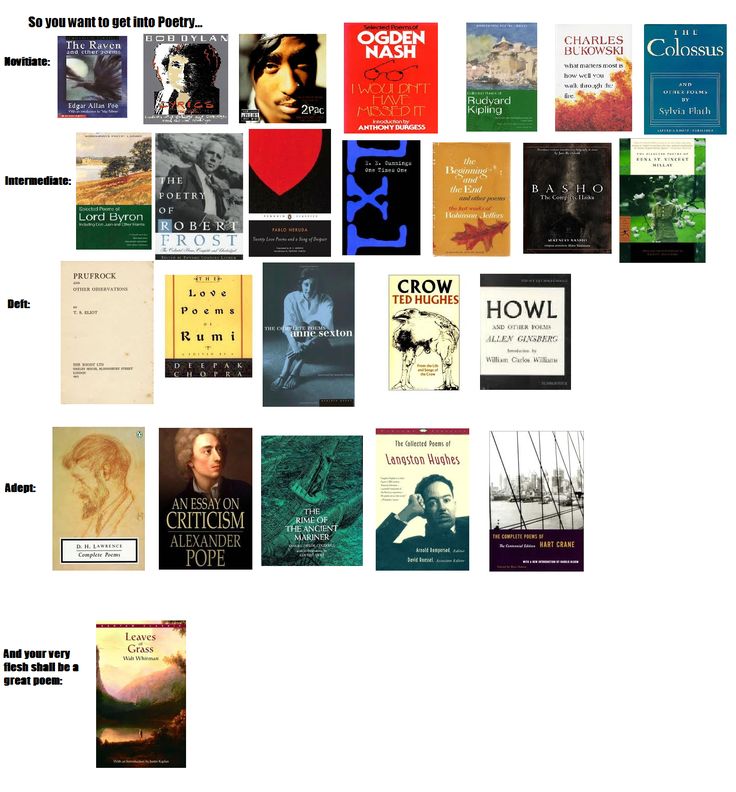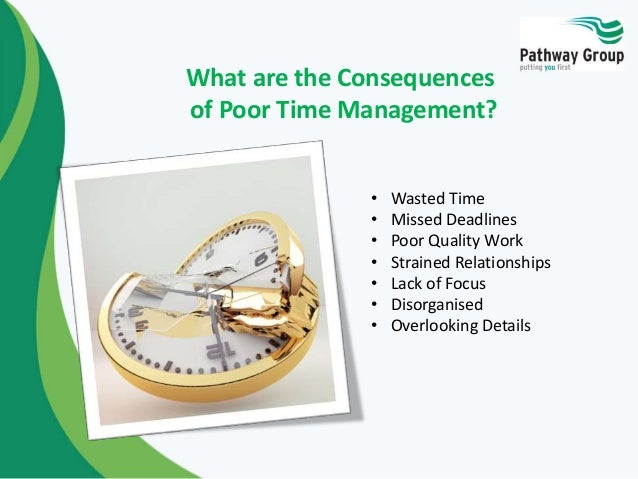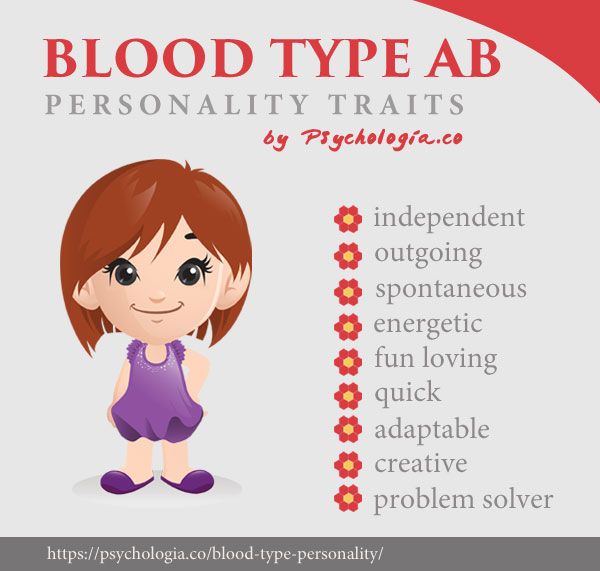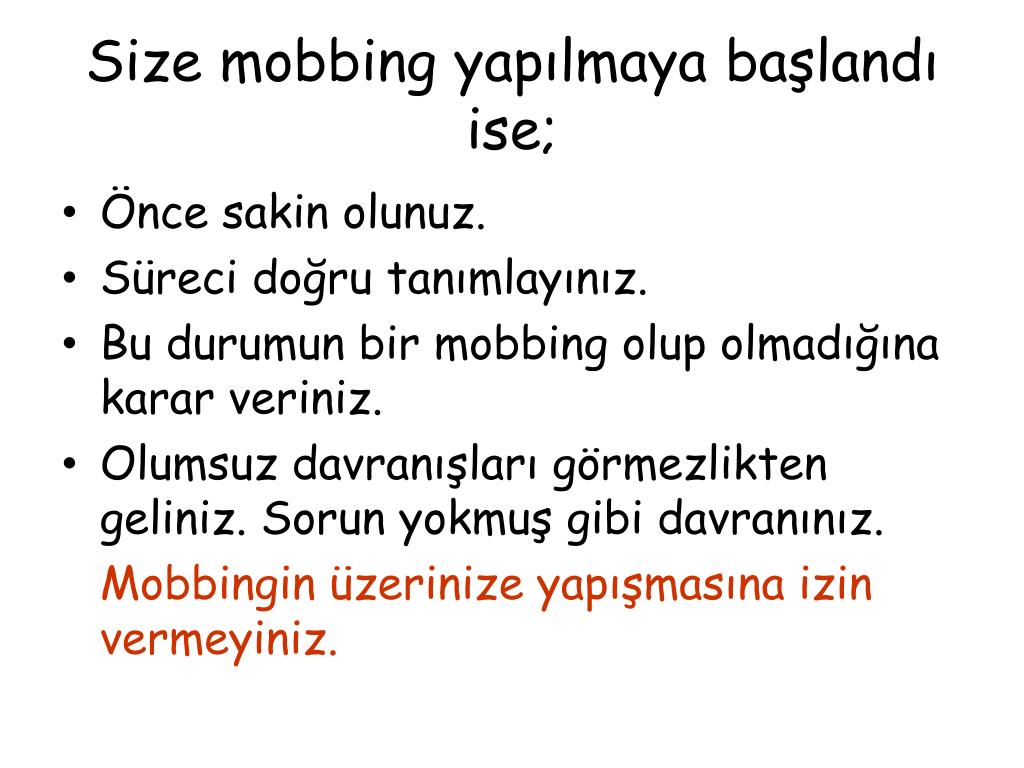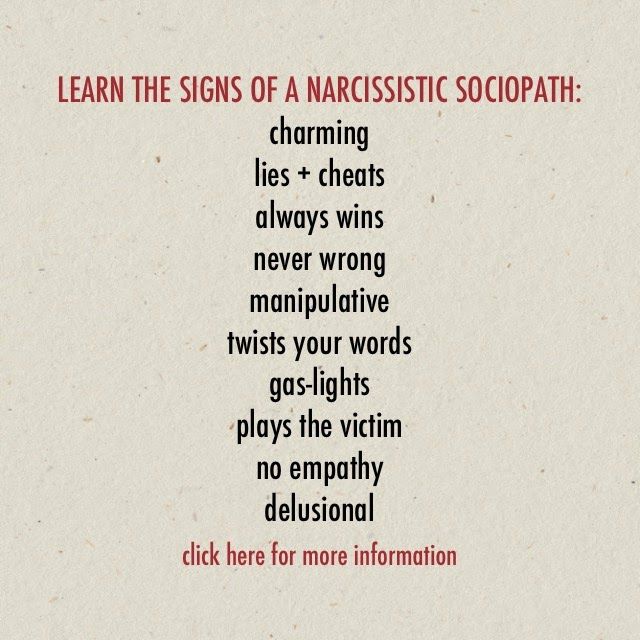How to express your feelings for someone
How to Express Your Feelings: 7 Tips
Jump to section
7 basic emotions
How to identify your feelings
Expressing feelings vs. thoughts
10 ways to express your feelings better
What if you don't express your feelings?
Why do I feel bad for expressing my feelings?
Final thoughts: 7 extra tips to improve your emotional intelligence
Have you ever burst into tears at the office or gotten irrationally angry after a small inconvenience? It probably caught you by surprise as much as anyone else. It is disorienting to find yourself in a moment when you don’t know how to express your feelings.
Think about a volcano: molten rock is trapped inside, pressure builds, until one day, boom — it explodes. Lava flows. Everywhere.
That's what it feels like if you get into a habit of bottling up your emotions until they explode uncontrollably. Uncontrollable eruptions aren't good for you, and they scare or put off others, as well. That’s why it’s so important to learn how to express your feelings in healthy, productive ways, whether in the workplace or with your friends and family.
Is your stomach in knots just thinking about emotional expression? Expressing emotions forces you to be vulnerable and takes courage.
Finding constructive ways to express feelings isn't always easy, especially if you didn't have a healthy model in your family growing up. It's also harder if you don't have a strong sense of belonging or acceptance — in your organization or personal life — or if you feel insecure about your job or position.
If you don't feel accepted, every interaction is high-stakes. Expressing any strong emotion or vulnerability might feel risky. It takes lots of self-awareness to pinpoint your feelings and distinguish them from your thoughts. You must also articulate your words carefully.
Let's begin with naming some of the most basic emotions we feel. Before you can learn how to express your feelings, you need to have the right vocabulary.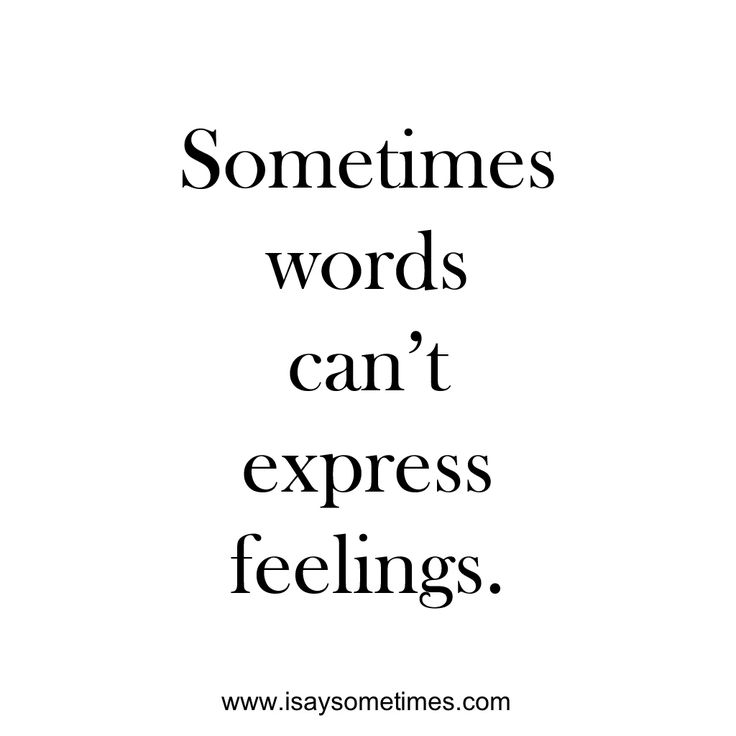
7 basic emotions
The first step to expressing your feelings is naming some basic emotions. Humans can feel so many emotions that we get confused about what we're experiencing. Some feelings are disguised as others, like anxiety that looks like anger at first. However, sometimes our feelings are very clear and we just need to find the right word for them.
In English, there are dozens of words that can describe where we’re at mentally, emotionally, and physically. That can get overwhelming when you’re trying to express your feelings. To help you find the words, we’ve boiled down all these feelings into seven basic negative and positive emotions.
Keep these in mind next time you want to share your emotions with someone:
- Enjoyment: You can enjoy things like watching a sunset, partaking in one of your hobbies, or being around people you love.
- Sadness: Sadness can creep in when you watch an emotional movie, and reflect on past memories, or missed opportunities.
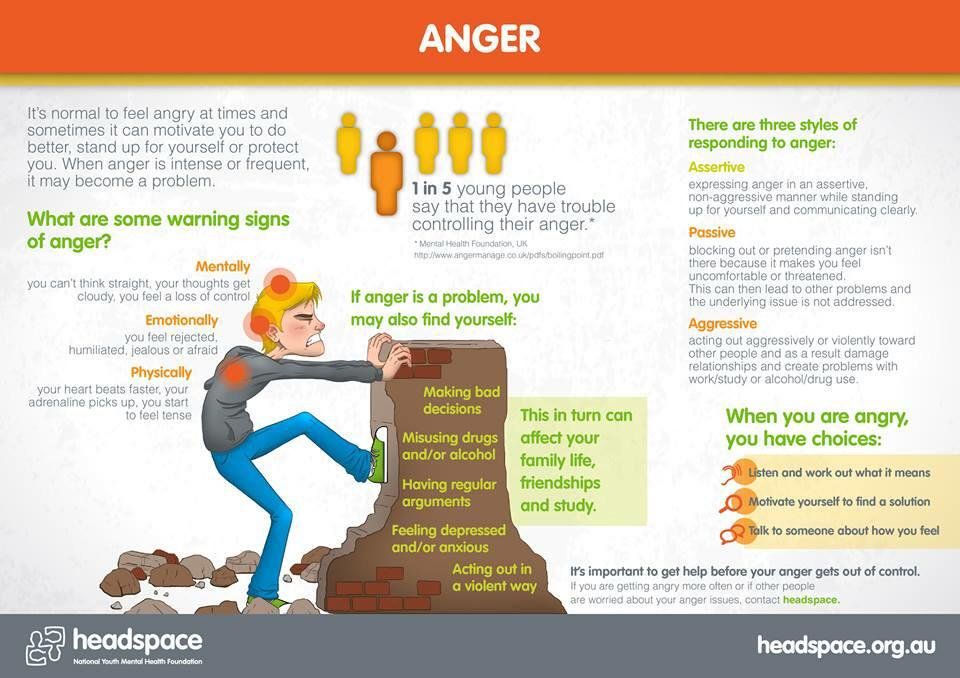
- Fear: Fear can be experienced when you’re scared unexpectedly, or remember past things that have frightened you before.
- Anger: Anger can be something that explodes out of your fast, or it’s been bottled up for a while.
- Disgust: You can feel disgusted by people’s behavior, food, and even smells.
- Surprise: Surprise can cause us to feel other emotions like enjoyment but also anger, and it’s something that’s sudden.
- Embarrassment: Everyone is embarrassed by different things, but generally it makes us feel awkward and uncomfortable with our environment.
How to identify your feelings
Listing all of the basic emotions doesn’t mean you can identify them within yourself. It takes time to connect with your personal feelings in an emotional moment. Maybe you can place your feelings afterward, but it’s often too late by then.
One tip to help you identify your feelings is to notice your physical reactions. When you get embarrassed, your cheeks turn red and you can feel your face burning up.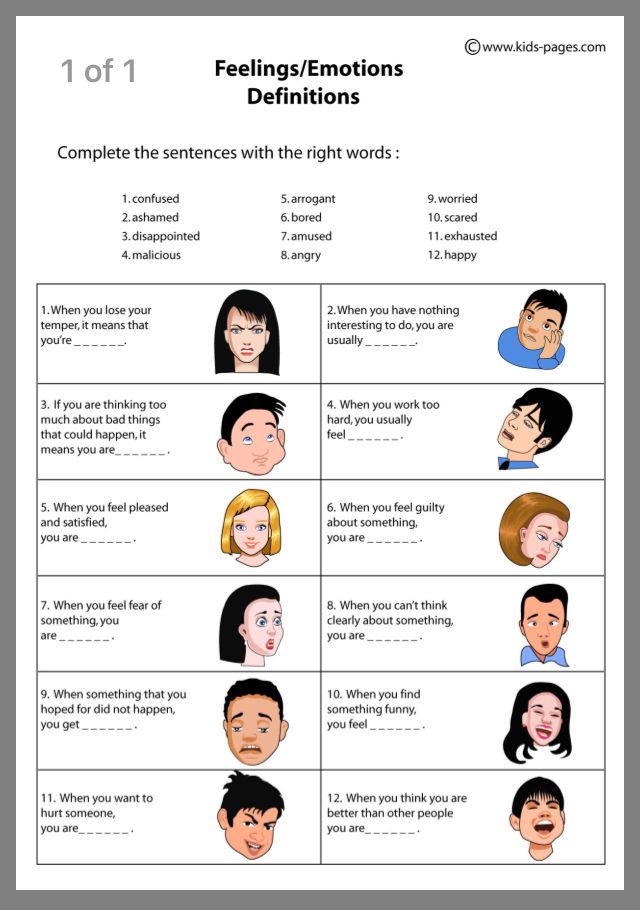 If you're afraid or anxious, you could struggle to take deep breaths and calm yourself. Do you feel jittery every time you do a presentation?
If you're afraid or anxious, you could struggle to take deep breaths and calm yourself. Do you feel jittery every time you do a presentation?
Our feelings are deeply connected to our physical bodies. Researchers have even been able to show exactly where some feelings are mapped in our bodies. No matter how it manifests, make sure you pay attention to what your physical feelings are telling you.
Over time, you could notice some patterns in how your body reacts. Take note of your recent bodily responses and reflect on them. Reviewing past situations and experiences helps us understand our feelings.
Don’t get too caught up in the past though. Slowing down and refocusing our attention on the moment can help us identify our feelings more clearly. Learning to do this can’t happen overnight, however. If you need extra support, BetterUp can help. We can guide you towards developing strategies that will help you to be aware of your emotional health.
Expressing feelings versus thoughts
We confuse our thoughts with our feelings all the time.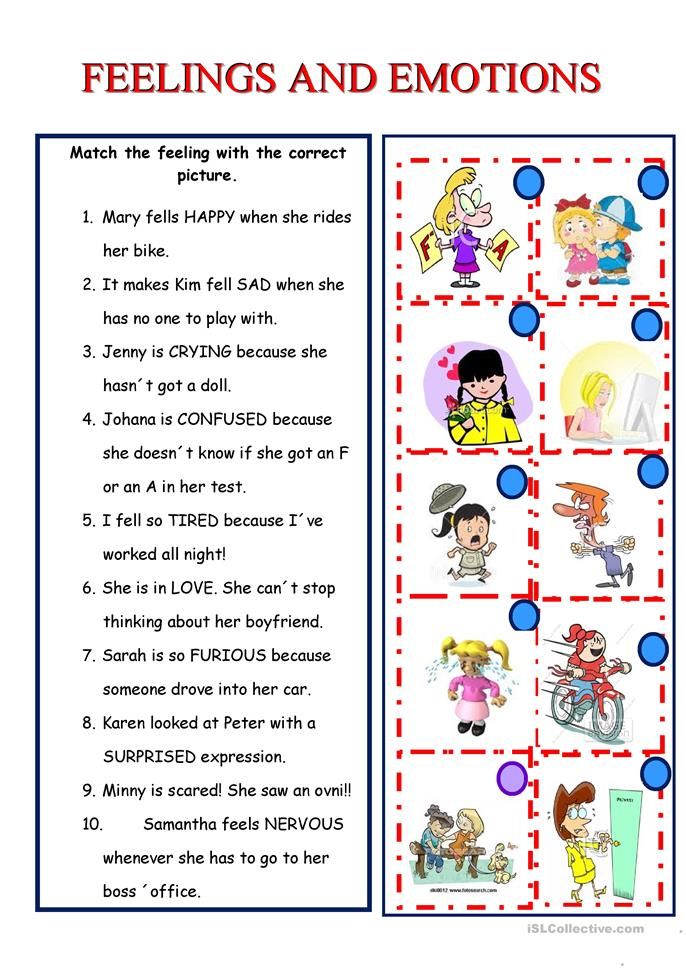 But when it's time to express feelings, we have to make sure we aren't simply expressing our thoughts.
But when it's time to express feelings, we have to make sure we aren't simply expressing our thoughts.
Thoughts are what words are in our head, and combine with our beliefs and values. Thoughts don’t necessarily always have to turn into feelings, and we have the power to control them. We can even train ourselves to think more positively.
Our feelings are a symptom of our emotions and are a little less controllable. We feel them all throughout our bodies. They sometimes give us a way through our body language, like the inability to look disappointed if your boss asks you to work late.
One way to help you differentiate your feelings from your thoughts is to put them into words by using the "I think vs. I feel" rule. Create a sentence: If you say something like "I feel embarrassed," then that's a feeling. You didn't think that you were embarrassed, you felt it.
10 ways to express your feelings better
We all know that expressing our feelings is important.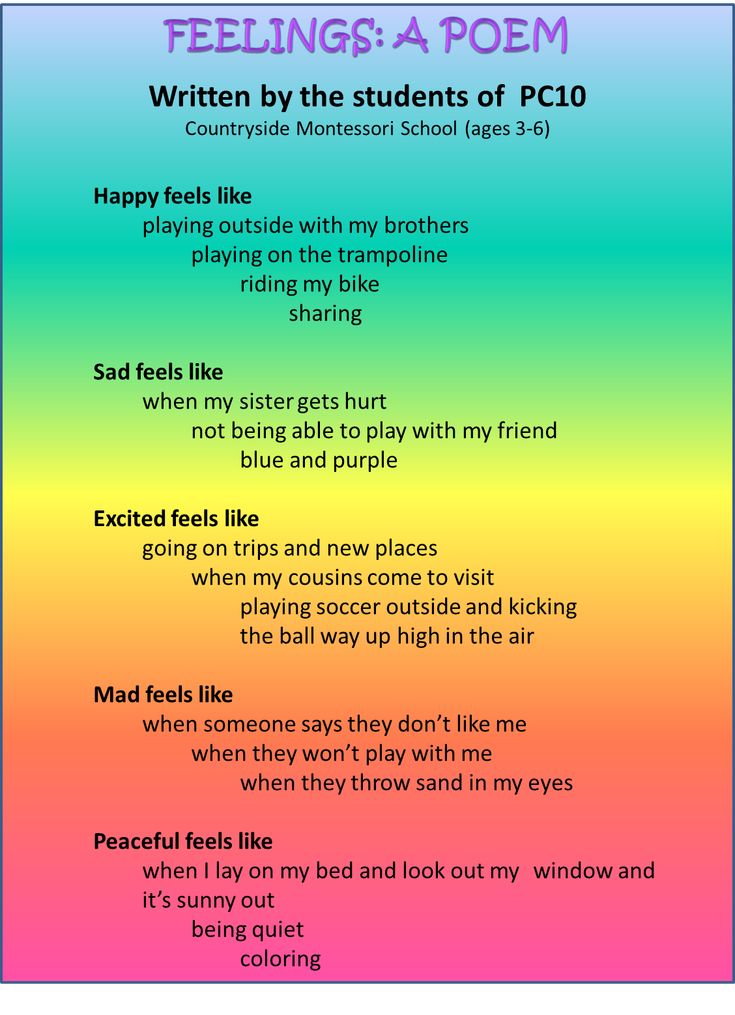 However, that doesn’t mean we feel confident in our ability to do so. Becoming comfortable with expressing ourselves takes time. We can get better at it, however, with a bit of effort and the right strategies in mind.
However, that doesn’t mean we feel confident in our ability to do so. Becoming comfortable with expressing ourselves takes time. We can get better at it, however, with a bit of effort and the right strategies in mind.
Here are 10 tips for expressing yourself better:
- Make practicing mindfulness through meditation, yoga, or breathing exercises a habit
- Work on being more vulnerable with the people who care about you
- Don’t worry about saying things perfectly the first time — practice makes perfect
- Let your body language help you convey your emotions
- Try a new hobby to help yourself be more expressive, especially something creative
- Express your happy feelings too, not just the hard ones
- Play games that help you become comfortable with talking about yourself
- Be patient and forgiving with others as they learn to respond to your feelings
- Limit distractions like cell phones or music when you're sharing your feelings
- Understand and identify what upsets you and makes you not want to express your feelings
What if you don't express your feelings?
Things get messy if you don’t learn how to express your feelings to someone and boil over (like, say, a volcano).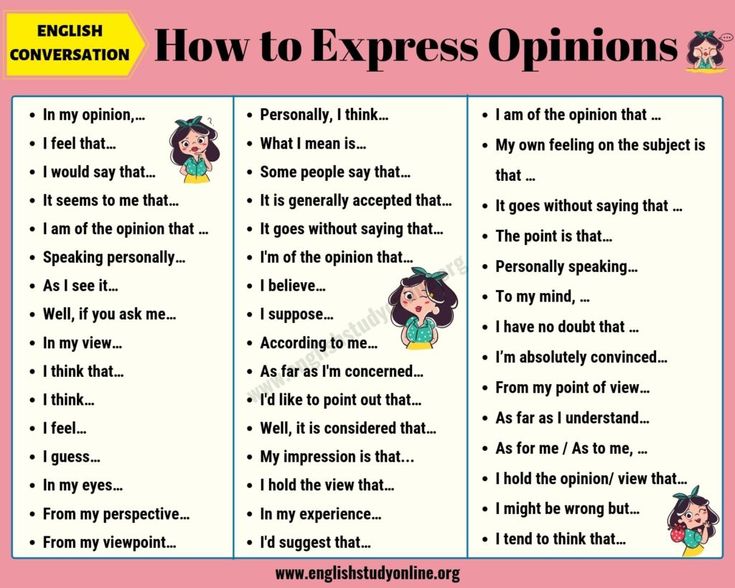 Repeatedly avoiding discussions about our feelings negatively impacts our physical and mental health. Plus, it can affect our ability to develop healthy relationships.
Repeatedly avoiding discussions about our feelings negatively impacts our physical and mental health. Plus, it can affect our ability to develop healthy relationships.
A person who does not express their feelings can suffer from high blood pressure and cardiovascular problems. These people feel more stressed because of the emotional labor they experience while holding their emotions in.
Suppressing emotions isn't good for our wellness and overall well-being, either. Studies have found that people who choose not to express their feelings may experience more negative emotions than positive feelings. They can also experience more anxiety or depression.
When we don’t healthily express ourselves, there’s a greater chance that we’re isolating ourselves and feeling more lonely. It makes us feel like nobody relates to or understands who we indeed are. Research has found that expressing our emotions plays an important role in our social well-being and how we interact with others around us.
When we express our emotions in a more positive way, our relationships become stronger. In reality, expressing yourself has far more health benefits than worrying over how to do so.
In any relationship, romantic or platonic, we should express ourselves freely. Our partners or loved ones won’t know how we feel or if we’re happy if we don’t share it with them. Nobody can read our minds, so that’s why it’s up to us to continue to express ourselves.
Why do I feel bad for expressing my feelings?
Not everyone is excited to become an open book because it leaves them exposed and vulnerable. Letting people in can be difficult for many reasons.
A person's upbringing and background influence how they view expressing feelings. A child’s parents might tell them indirectly or directly not to raise their voices or cry when they were upset. This can teach that expressing negative feelings isn’t acceptable.
As a result, feelings of fear and anxiety can even be associated with expressing even positive feelings like enjoyment.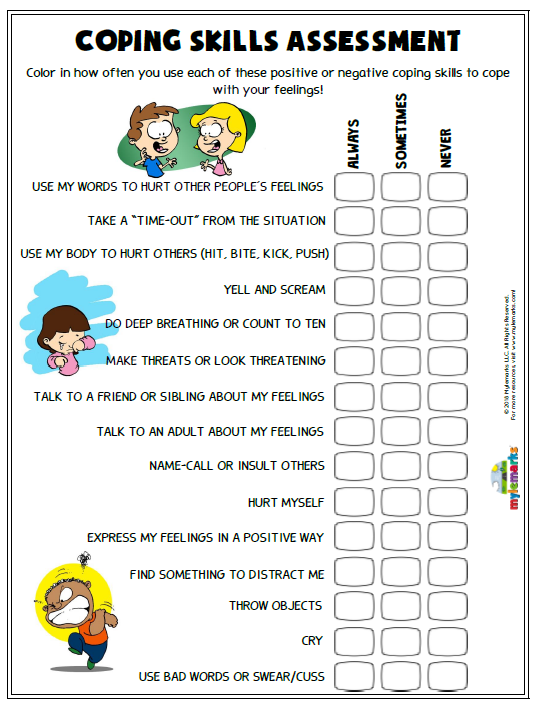 If our families didn’t support strong emotional expression, it can be hard to start sharing your feelings as an adult.
If our families didn’t support strong emotional expression, it can be hard to start sharing your feelings as an adult.
This is because we carry our childhood lessons into adulthood, including how we deal with our feelings. So, if we've never learned how to deal with our emotions constructively, we'll struggle to express ourselves.
But overcoming the fear of explaining how we feel is uplifting. Expressing ourselves boosts our self-awareness and confidence. It can also show us that it's healthy to be more authentically ourselves. The weight that is lifted after we express ourselves can even motivate us to pursue our passions and set new goals.
Final thoughts: 7 extra tips to improve your emotional intelligence
In some scenarios, you might be inclined to express how you feel. In others, your first instinct could be to withdraw yourself and hide your emotions. Expressing your feelings takes a level of emotional intelligence that keeps you in tune with yourself and those around you. You must be open, honest, and ready to share your feelings — and listen to others’ feelings, too.
You must be open, honest, and ready to share your feelings — and listen to others’ feelings, too.
If you're ever feeling overwhelmed, taking a moment to pause and think before you act can help you express yourself more clearly.
We’ll leave you with seven extra ways you can be more in tune with your feelings and improve your emotional intelligence:
- Try to get in tune with the other person’s feelings so you can choose your words wisely
- Accept your feelings rather than deny them
- Avoid being judgmental of yourself and others
- Practice how you'd express yourself by journaling your feelings
- Be a good listener when people share things with you
- Practice positive self-talk and tame your inner critic
It can be helpful to find someone who can keep you accountable when you're working on expressing yourself. If you need help, you can try learning how to express your feelings with one-on-one coaching.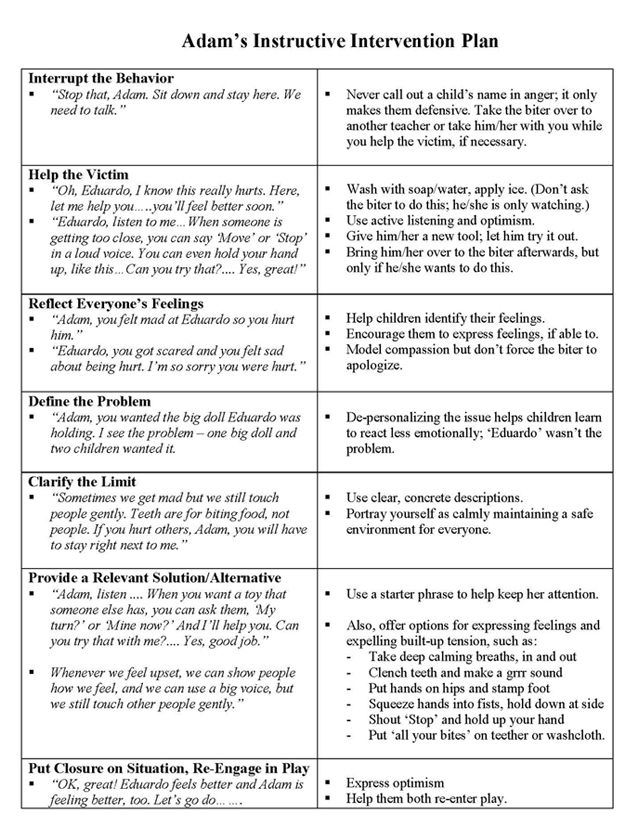 It’s no easy task, but BetterUp can provide the accountability you need to strengthen your communication skills and grow personally and professionally.
It’s no easy task, but BetterUp can provide the accountability you need to strengthen your communication skills and grow personally and professionally.
How to Express Your Feelings: 30+ Emotional Expression Tips
Aristotle spoke of the pleasures inherent in the cathartic release of tension.
Catharsis has since been used within the mental health field as a way of describing the practice of emotional expression, which is essential for communicating our needs, desires, and emotions (Brackett & Simmons, 2015).
Plus, being able to express one’s emotions is associated with various positive outcomes, such as increased adjustment to stressors (Moreno, Wiley, & Stanton, 2017), greater life satisfaction (Stanton, Kirk, Cameron, & Danoff-Burg, 2000), and increased psychological resilience (Eldeleklioglu & Yildiz, 2020).
This article will delve into the topic of healthy emotional expression, including tips on how to express your emotions, the downside of keeping things in, expression through art and writing, and much more.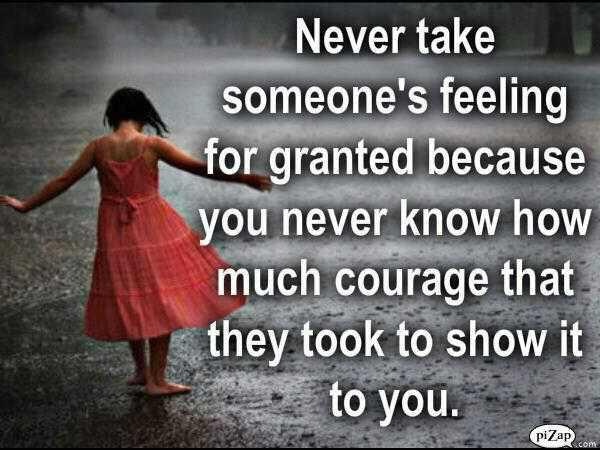
With this plethora of resources, readers will be better able to reap the rewards of healthy emotional expression.
In times of joy, all of us wished we possessed a tail we could wag.
W. H. Auden
Before you continue, we thought you might like to download our three Emotional Intelligence Exercises for free. These science-based exercises will enhance your ability to understand and work with your emotions and will also give you the tools to foster the emotional intelligence of your clients, students, or employees.
This Article Contains:
- Expressing Your Emotions in a Healthy Way: 16 Tips
- What Happens When You Don’t Express Your Emotions?
- Expressing Emotions Through Art and Writing
- 8 Techniques for Expressing Emotions in Relationships
- PositivePsychology.com’s Helpful Resources
- A Take-Home Message
- References
Expressing Your Emotions in a Healthy Way: 16 Tips
While you may understand logically that healthy emotional expression is important, just exactly how to go about it isn’t always straightforward.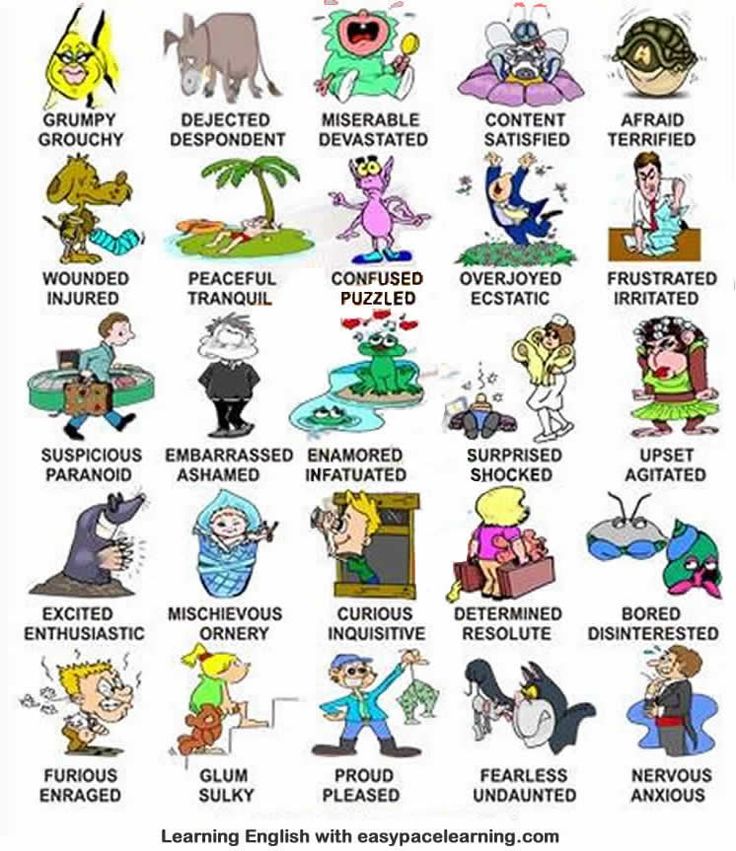 Fortunately, there are many ways to facilitate healthy emotional expression; here are 18 tips:
Fortunately, there are many ways to facilitate healthy emotional expression; here are 18 tips:
1. Use positive self-talk.
We all have an inner dialogue running through our heads, which is sometimes negative and counterproductive. If you have a negative inner dialogue, this is bound to make healthy self-expression difficult (Beck et al., 1979; Ingram & Wisnicki, 1988; Hiçdurmaz et al., 2017). Consider whether the messages in your head are damaging, and if so, work on ways to replace them with positive ones.
2. Be a good listener.
It might be helpful to remember that…
“…we have two ears and one mouth so that we can listen twice as much as we speak.”
Epictetus
It is hurtful to feel unheard (Nichols, 2009), so listen to your family, friends, and coworkers and you will be in a far better position to respond with expressions of empathy and understanding.
3. Try spirituality.
Mother Teresa said:
Joy is prayer; joy is strength; joy is love; joy is a net of love by which you can catch souls.
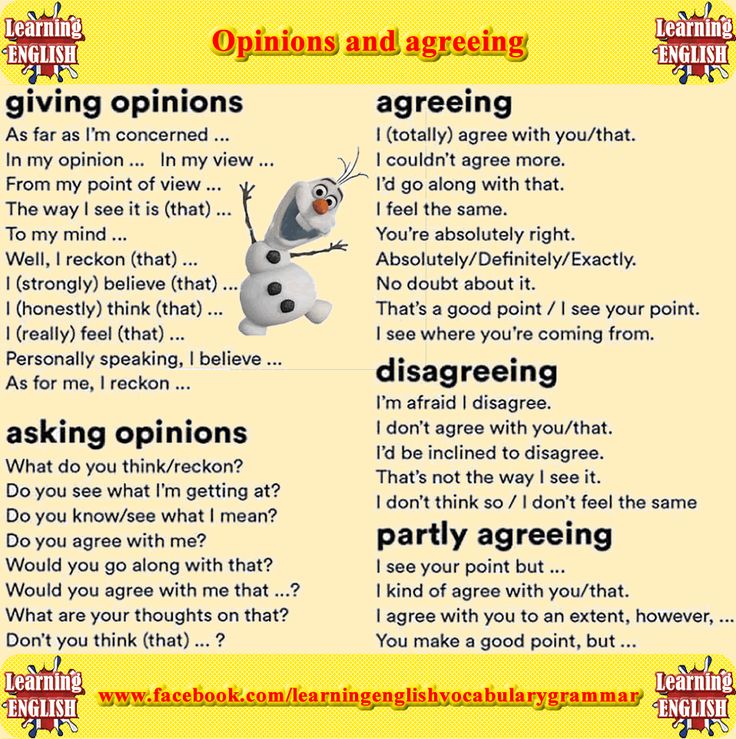
Mother Teresa
Many others have also found strength in the self-transcendent emotions related to spirituality (Stellar et al., 2017; Haidt, 2003), and if you need an extra nudge in terms of expressing your emotions, it might help you too.
4. Teach emotion words to young children.
Children often lack the language ability to express how they feel. By using tools such as faces conveying different emotions, children will be helped to understand the words for different emotions (Grosse et al., 2021; Streubel et al., 2020).
5. Practice empathy.
Whether among family (Geiger et al., 2016), friends (Goleman, 2006), or coworkers (McKee et al., 2017), practicing empathy creates bonds that enable us to be emotionally in sync with others.
6. Model emotional expression.
Children who see adults healthily express a range of emotions are more likely to follow suit (Corso, 2007). If you are someone who spends time with young people, show them what healthy emotional expression looks like.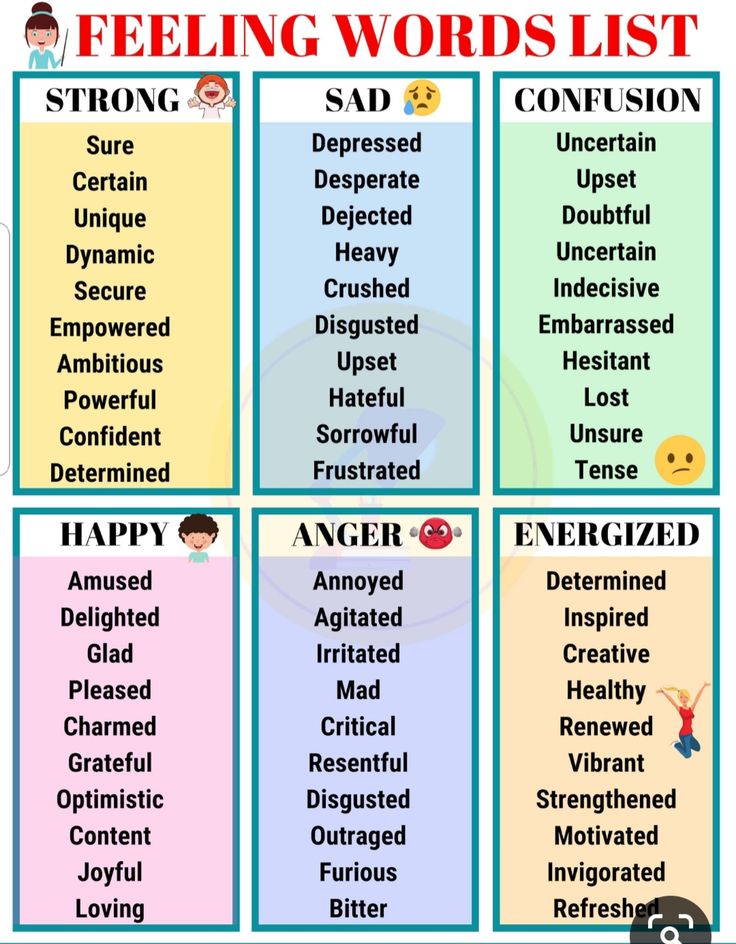
7. Forgive.
Elbert Hubbard said:
The ineffable joy of forgiving and being forgiven forms an ecstasy that might well arouse the envy of the gods.
Elbert Hubbard
Whether you have not forgiven yourself or someone else, holding a grudge is the antithesis of expression. If you free yourself from resentment, you will open your heart and mind to positive expression Enright & Fitzgibbons, 2014; Toussaint & Webb, 2005; Karremans et al. 2003).
8. Practice acceptance.
Happiness can exist only in acceptance.
George Orwell
Try to accept those aspects of your life that are out of your control. Doing so will make you feel better while freeing up your mind to become more emotionally expressive (Chapman et al., 2011; Linehan, 2014). For more on that, read our article on Radical Acceptance.
9. Play games with kids that promote emotional expression.
Games are a fun and valuable approach for teaching children how to express themselves.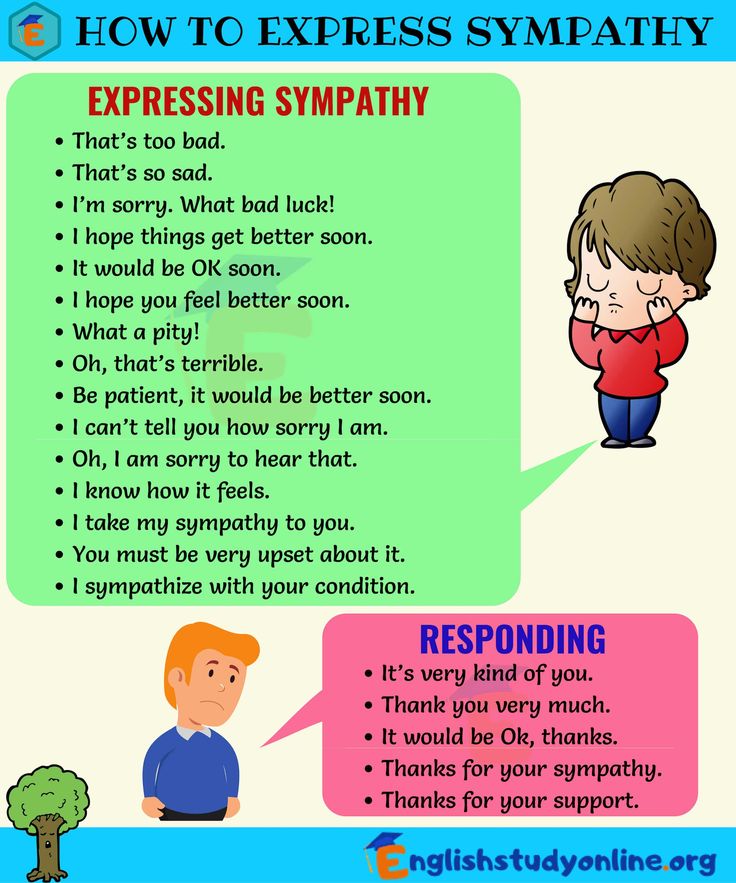 For example, the Emotion Locomotion program for children ages 6–8 uses a train analogy to teach an array of emotions such as anger, sadness, and happiness (McLachlan et al., 2009).
For example, the Emotion Locomotion program for children ages 6–8 uses a train analogy to teach an array of emotions such as anger, sadness, and happiness (McLachlan et al., 2009).
10. Be grateful.
Happiness is itself a kind of gratitude.
Joseph Wood Krutch
It is pretty hard to be unhappy while feeling thankful. Appreciate what you have and you will be better able to express a sense of joy (Emmons & Crumpler, 2000; Emmons & McCullough, 2003; Emmons & Stern, 2013).
11. Don’t postpone happiness – savor the moment.
Many people will not allow themselves to be happy until they reach some sort of milestone (e.g., weight loss, job promotion, etc.). The moment for joy is NOW, and savoring pleasant experiences – big or small – has been associated with higher levels of subjective wellbeing (Smith & Bryant, 2017). Read more about the pursuit of happiness and the benefits of positive emotions.
12. Try something new.
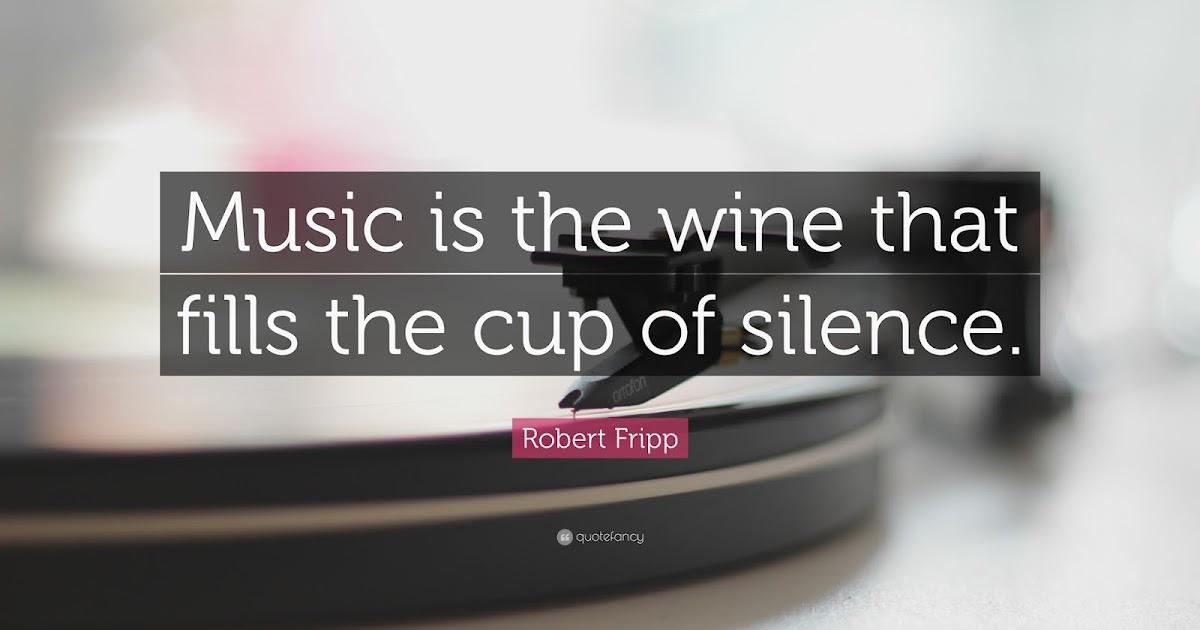
If you are having trouble expressing your feelings, perhaps you are in a rut. Getting out of your comfort zone often leads to greater emotional expression and wellbeing (Heller et al., 2020).
13. Take a risk.
Emotional expression equals risk; it means you are putting yourself in the position of potential rejection. But meaningful conversations and relationships require such risk. So, take a chance and you will be rewarded (Brown, 2015).
14. Be optimistic.
Optimism is the faith that leads to achievement. Nothing can be done without hope and confidence.
Helen Keller
By focusing on the positive, you will find it easier to express yourself in a range of situations while enjoying the many wonders of life (Seligman, 2006).
15. Do some gardening.
In search of my mother’s garden, I found my own.
Alice Walker
Gardening is like art; there are endless lovely plants and flowers from which to express your creativity. And besides, who knows what you might find within yourself (Lumber et al., 2017)?
And besides, who knows what you might find within yourself (Lumber et al., 2017)?
16. Practice mindfulness.
Whether in the form of meditation, yoga, or breathing exercises, mindfulness has been found to promote optimism, happiness, positive emotional states, and self-acceptance (Amutio et al., 2015). Each of these outcomes aids in the promotion of emotional expression.
What Happens When You Don’t Express Your Emotions?
Feelings or emotions are the universal language and are to be honored. They are the authentic expression of who you are in your deepest place.
Judith Wright
Keeping things in is indeed a bad idea. While this notion makes intuitive sense, it is also supported by research. Here are 13 notable examples:
- Women who suppressed emotions during an experimental study were found to have increased blood pressure (Butler et al., 2003).
- In a study of emotion regulation, those who suppressed their feelings experienced less positive and more negative emotions (Gross & John, 2003).
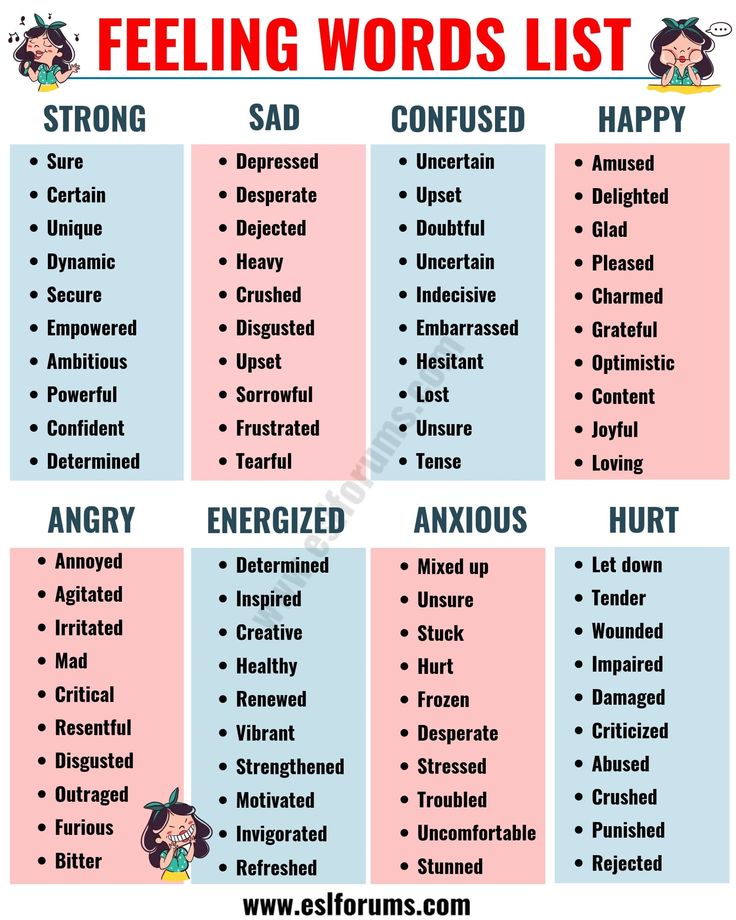
- In a study in which participants either expressed or suppressed emotions following a disgusting film, those who suppressed their feelings experienced relatively increased cardiovascular activation (Roberts, Levenson, & Gross, 2008).
- In a 12-year prospective study, emotional suppression was related to a significantly greater risk of both cancer and cardiovascular disease mortality (Chapman, Fiscella, Kawachi, Duberstein, & Muennig, 2013).
- In a comprehensive meta-analysis by Chervonsky and Hunt (2017), emotion suppression was related to poorer relationship quality, lower social satisfaction, lower social support, more negative first impressions, and lower social wellbeing.
- In a preliminary study, adult male participants who suppressed their emotions after watching a distressing film clip experienced greater distress and increased heart rate (Tull, Jakupcak, & Roemer, 2010).
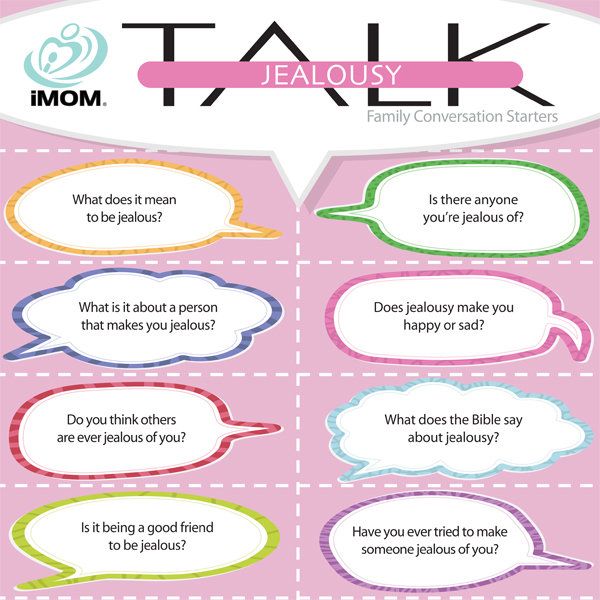
- In a study comparing individuals diagnosed with major depression versus healthy controls, suppression of both negative and positive emotions was associated with increased depressive symptoms among depressed individuals (Beblo et al., 2012).
- Campbell-Sills, Barlow, Brown, and Hofmann (2006) found that emotion suppression after watching an emotion-provoking film was related to increased negative emotions among individuals suffering from anxiety and mood disorders.
- In an experiment in which participants gave a speech in front of a camera, those who suppressed their emotions experienced more anxiety and increased heart rate (Hofmann, Heering, Sawyer, & Asnaani, 2009).
- Quartana and Burns (2007) conducted a study in which participants experienced a mental arithmetic task with or without harassment followed by a cold-presser experience (i.e., dipping a person’s hand in very cold water). Those in the suppression group reported greater pain levels.

- In their review of the aggression and emotion regulation literature, Roberton, Daffern, and Bucks (2012) reported that under-regulation of emotion was associated with an increased probability of aggression.
- In an investigation using a daily diary method to assess positive and negative mood, those who suppressed their emotions experienced higher negative affect and lower positive affect (Brockman, Ciarrochi, Parker, & Kashdan, 2016).
- In a study comparing clinically depressed, formerly depressed, and never-depressed participants, all groups were presented with an affective priming task. Among the formerly depressed group, emotion suppression was related to increased depressive symptoms (Joormann & Gotlib, 2010).
Expressing Emotions Through Art and Writing
Wherever the soul is in need, art presents itself as a resourceful healer.
McNiff, 2004, p. 5
Art therapy is often used by mental health practitioners to deal with a range of issues such as coping with trauma, addiction, learning disabilities, and other medical and psychological problems (Malchiodi, 2012).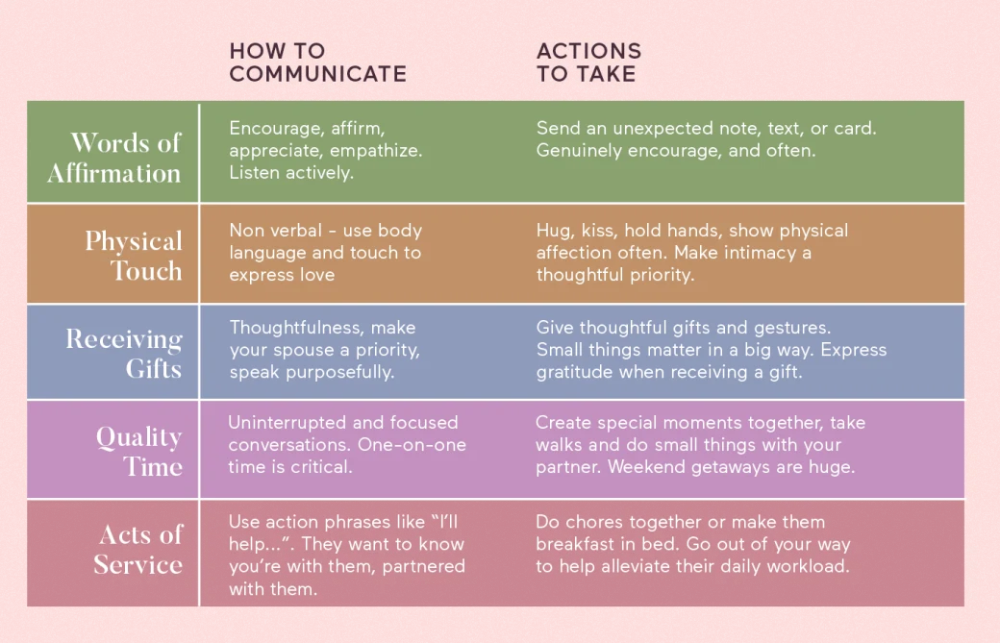
The general population may also enjoy many mental health benefits, including emotional expression, from engaging in writing, as well as other artistic endeavors. Five ways of using creativity to express oneself are presented below.
1. Writing
Regardless of your skills, writing is an effective way to express emotions and communicate with others. For example, in a study by Barclay and Skarlicki (2009), participants were placed in one of the following four groups:
- Writing about emotions
- Writing about thoughts
- Writing about emotions and thoughts regarding an injustice
- Writing about a trivial topic
Those who wrote about their emotions and thoughts were higher in terms of psychological wellbeing and personal resolution than the other groups (Barclay & Skarlicki, 2009).
Similarly, writing about traumatic events has been associated with greater physical and psychological outcomes among both clinical and non-clinical samples (Baikie & Wilhelm, 2005).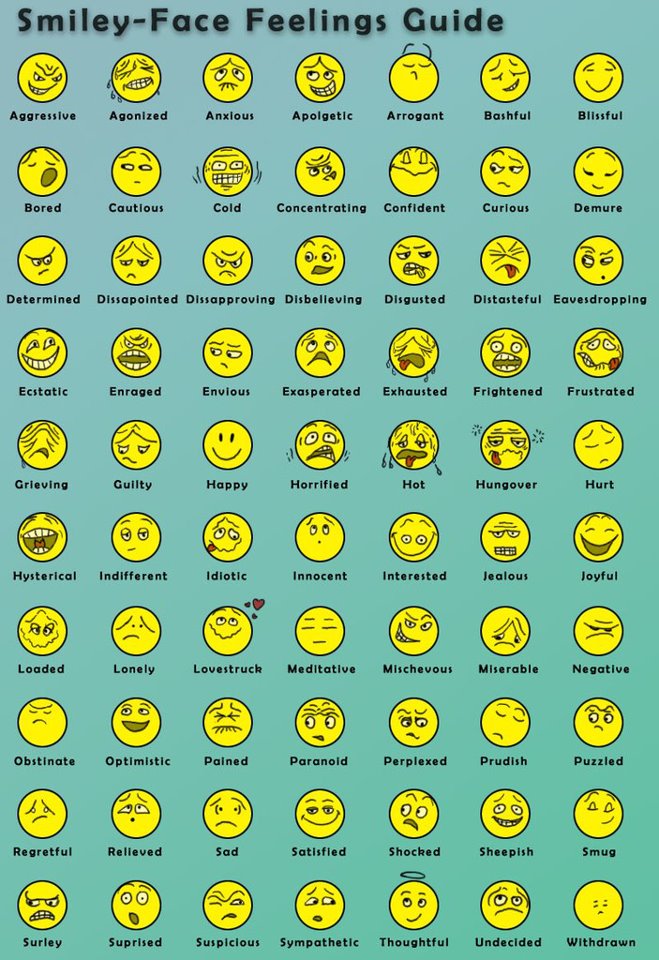 Along these lines, creating narratives about emotional situations has been linked with a variety of positive psychological outcomes (Niederhoffer & Pennebaker, 2009).
Along these lines, creating narratives about emotional situations has been linked with a variety of positive psychological outcomes (Niederhoffer & Pennebaker, 2009).
Whether you prefer journaling, storytelling, or some other type of writing, go for it – it is bound to make you feel better.
2. Drawing
Drawing is another fun and easy way to express emotions and embrace happiness. Not surprisingly, research has found that drawing to either express positive emotions or vent stress is related to enhanced mood (Smolarski, Leone, & Robbins, 2015).
3. Clay
Handling clay is another enjoyable activity that has been associated with enhanced mood (Kimport & Robbins, 2012). Often used as a tool in art therapy, clay handling is associated with many positive therapeutic outcomes such as enhanced emotional expression, verbal communication, and catharsis (Sholt & Gavron, 2006).
4. Collages
You may recall gathering magazines and using glue to put together collages during elementary school.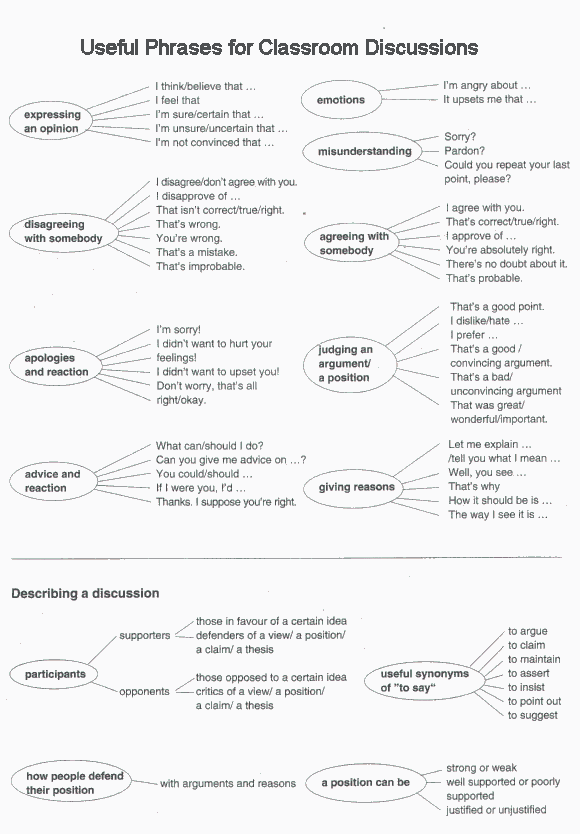 However, this fun activity is not just for kids. Indeed, creating collages is a terrific way for people of all ages to express feelings that are difficult to convey verbally (Buchalter, 2011).
However, this fun activity is not just for kids. Indeed, creating collages is a terrific way for people of all ages to express feelings that are difficult to convey verbally (Buchalter, 2011).
Moreover, this activity has been associated with enhanced problem-solving and decision-making skills, communication, and socialization among seniors (Buchalter, 2011).
5. Mandalas
Mandalas are beautiful geometric shapes that may be drawn or colored to promote a sense of calm. Mandalas were first used as a therapeutic tool by Carl Jung (Henderson, Rosen, & Mascaro, 2007) and have since been used by therapists and laypeople alike.
The benefits of creating mandalas are supported by research. For example, drawing mandalas has been related to decreases in trauma-related symptoms among individuals with post-traumatic stress disorder (Henderson et al., 2007).
8 Techniques for Expressing Emotions in Relationships
Effective communication is the cornerstone of healthy relationships.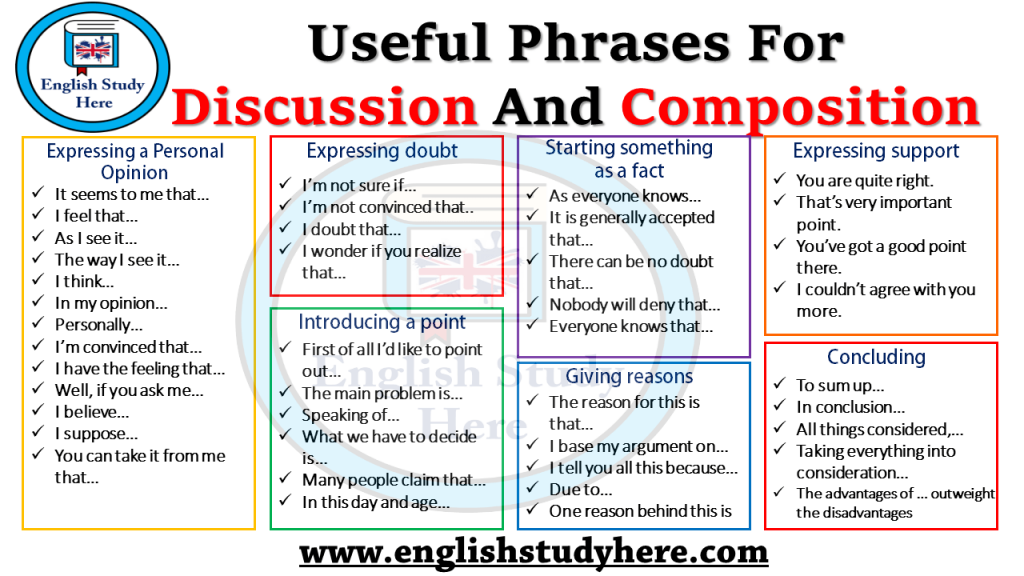
Nonetheless, sometimes individuals need a little help letting their feelings out. Here are eight research-supported ways in which relationships may be improved through the healthy expression of emotions:
1. Mindfulness
Mindfulness involves paying attention to one’s feelings and thoughts in the moment and without judgment (Kabat-Zinn, 2005). Mindfulness meditation has also been used as a way to enhance relationship quality and satisfaction.
For example, Carson, Carson, Gil, and Baucom (2004) conducted a mindfulness meditation retreat with healthy couples. They found that mindfulness was related to a whole host of long-term positive outcomes such as greater closeness, acceptance of each other, optimism, relaxation, relatedness, and relationship happiness.
Given these findings, couples in either healthy or challenging relationships may well benefit from the use of mindfulness techniques as a way to foster emotional connectedness, expression, and overall relationship satisfaction.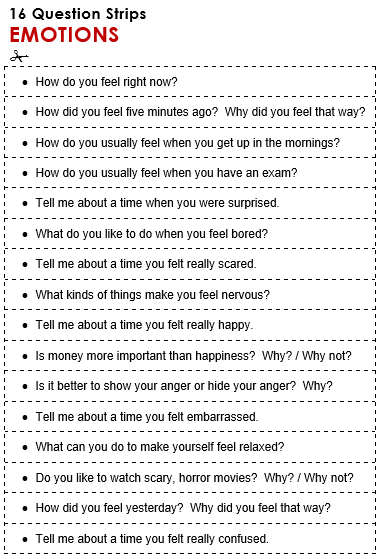
2. Expression of negative emotions
All types of relationships inevitably require the expression of negative emotions. When feelings of resentment, frustration, anger, and disappointment are suppressed, they may explode later and cause great damage to relationships.
For example, Graham, Huang, Clark, and Helgeson (2008) looked at the effects of the expression of negative emotions on relationship outcomes among college students. They reported that negative emotional expression was related to greater intimacy, the formation of more relationships, and increased support.
Of course, expressing negative emotions may be hurtful if done thoughtlessly. Therefore, whether relationships are among intimate partners, friendships, or coworkers, take a deep breath before expressing negative feelings and communicate them with tact, empathy, and sensitivity.
3. Use positive psychology activities
O’Connell, O’Shea, and Gallagher (2017) used a longitudinal design to explore the impact of positive psychology activities on relationship satisfaction. More specifically, participants were assigned to a relationship-focused gratitude activity, a relationship-focused kindness activity, a self-focused activity, or a control condition.
More specifically, participants were assigned to a relationship-focused gratitude activity, a relationship-focused kindness activity, a self-focused activity, or a control condition.
Both of the relationship-focused activities were related to significant improvements in relationship satisfaction. By expressing kindness (e.g., giving a compliment, doing a favor, giving a thoughtful gift) or gratitude (e.g., giving praise or thanking someone), the quality of various types of relationships is likely to be improved.
4. Try the Gottman methods
John Gottman and Julie Gottman (2008) have created a range of relationship-enhancing methods that, over three decades of research, have been associated with numerous positive relationship outcomes (Gottman & Gottman, 2008). Here are five of their proven strategies:
- Build love maps.
This involves showing an active interest in a partner’s feelings and needs. The Gottmans suggest using a ‘Love Map Card Deck’ to help express difficult emotions such as confusion and frustration.
- Build a culture of appreciation.
Sometimes individuals feel gratitude for their partner, but forget to say so. This approach involves actively showing appreciation for one’s partner by thanking them, which Gottman describes as “cultivating a positive habit of mind” (Gottman & Gottman, 2008, p. 153). - Turn toward bids.
The Gottmans describe bids as “verbal or nonverbal requests for connection” (Gottman & Gottman, 2008, p. 153). This basically involves building an emotional bank account by asking one’s partner what they need and responding positively. - Emotion coaching.
This involves taking a partner’s ‘emotional temperature’ by checking in to see how they are doing. - Building positive affect.
The Gottmans believe that building positive feelings in relationships promotes intimacy and positive feelings. They suggest prioritizing a number of ‘positive affect systems’ into relationships to promote humor, curiosity, play, comfort, and curiosity.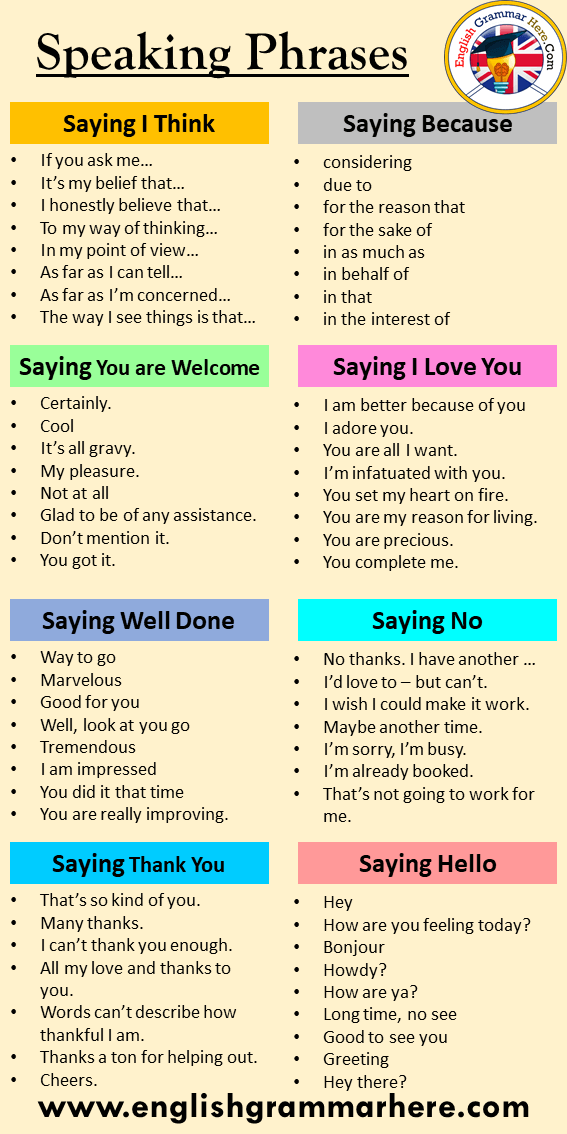
PositivePsychology.com’s Helpful Resources
At PositivePsychology.com, we offer various useful tools aimed at expressing healthy emotions; here are two examples:
1. Fostering Empathy Reflectively
This tool is designed for social workers but can be a great way to help clients develop the skill of reading each other’s emotional expressions. It involves a few activities and reflection prompts, for example:
- Watch an emotional scene in a film or drama between two to four characters.
- Now, reflect on how the characters behaved and the feelings they may have experienced.
- Write down how you think each character felt.
- Write down what you think motivated each character.
This exercise fosters empathy and understanding, which ultimately promote stronger relationships.
2. Emotional Expression Checklist
This tool is designed to promote adaptive emotional expression by helping clients reflect on their context before they express how they feel.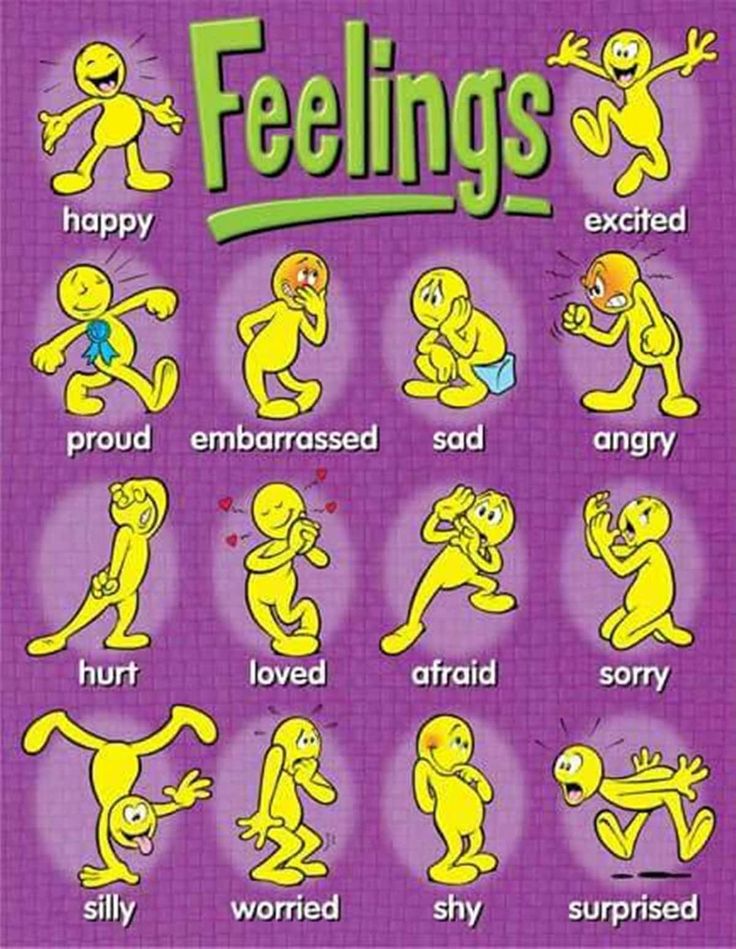
Clients are invited to consider their intended outcomes, the potential impact of expressing themselves on the other person, and how their intentions align with their values.
3. 17 Emotional Intelligence Exercises
If you’re looking for more science-based ways to help others develop emotional intelligence, this collection contains 17 validated EI tools for practitioners. Use them to help others understand and use their emotions to their advantage.
A Take-Home Message
Gandhi believed that
“happiness is when what you think, what you say, and what you do are in harmony.
Gandhi
Gandhi understood the importance of emotional expression. Consistent with his teachings, the ability to express how we feel is associated with numerous physical, emotional, and psychological benefits.
Therefore, if you find yourself feeling pent up, there is good reason to let those feelings out in a healthy way. And in doing so, you are sure to experience enhanced relationships, serenity, and contentment.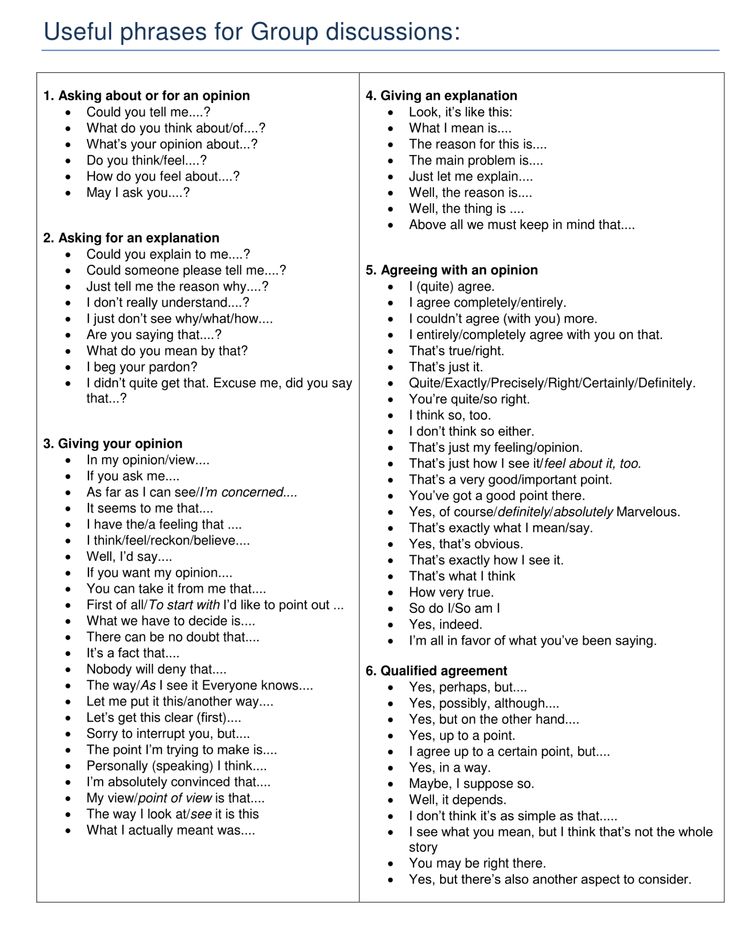
We hope you enjoyed reading this article. Don’t forget to download our three Emotional Intelligence Exercises for free.
- Amutio, A., Martínez-Taboada, C., Hermosilla, D., & Delgado, L. C. (2015). Enhancing relaxation states and positive emotions in physicians through a mindfulness training program: A one-year study. Psychology, Health & Medicine, 20(6), 720–731.
- Baikie, K. A., & Wilhlem, K. (2005). Emotional and physical health benefits of expressive writing. Advances in Psychiatric Treatment, 11(5), 338–346.
- Barclay, L. J., & Skarlicki, D. P. (2009). Healing the wounds of organizational injustice: Examining the benefits of expressive writing. Journal of Applied Psychology, 94(2), 511–523.
- Beblo, T., Fernando, S., Klocke, S., Griepenstroh, J., Aschenbrenner, S., & Driessen, M. (2012). Increased suppression of negative and positive emotions in major depression. Journal of Affective Disorders, 141(2–3), 474–479.

- Beck, A. T., Rush, A. J., Shaw, B. F., & Emery, G. (1979). Cognitive therapy of depression. Guilford Press.
- Brackett, M. A., & Simmons, D. (2015). Emotions matter. Educational Leadership, 72(2), 22–27.
- Brockman, R., Ciarrochi, J., Parker, P., & Kashdan, T. (2016). Emotion regulation strategies in daily life: Mindfulness, cognitive reappraisal and emotion suppression. Cognitive Behaviour Therapy, 46(2), 91–113.
- Brown, B. (2015). Daring greatly: How the courage to be vulnerable transforms the way we live, love, parent, and lead. Avery.
- Buchalter, S. (2011). Art therapy and creative coping techniques for older adults. Jessica Kingsley Publishers.
- Butler, E. A., Egloff, B., Wilhelm, F. H., Smith, N. C., Erickson, E. A., & Gross, J. J. (2003). The social consequences of expressive suppression. Emotion, 3(1), 48–67.
- Campbell-Sills, L.
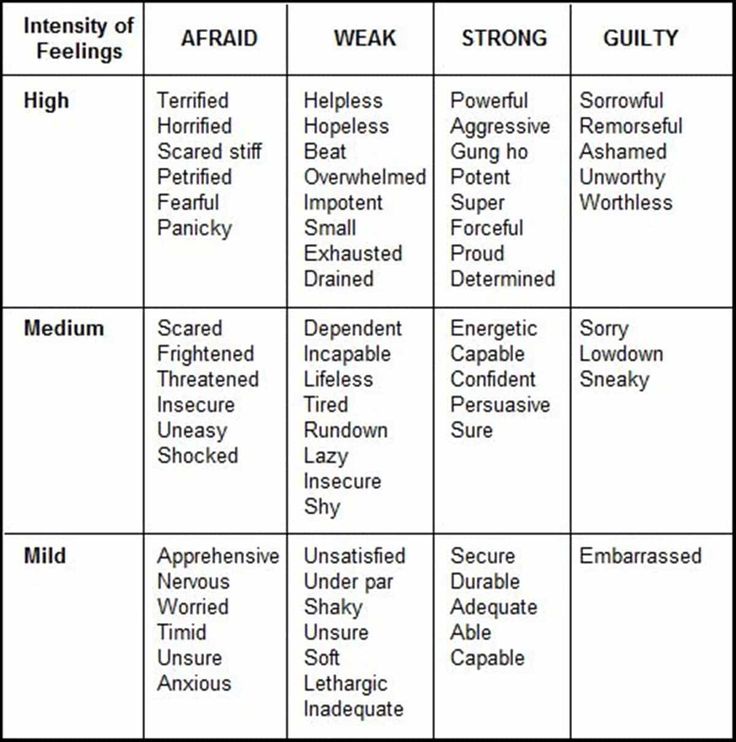 , Barlow, D. H., Brown, T. A., & Hofmann, S. G. (2006). Acceptability and suppression of negative emotion in anxiety and mood disorders. Emotion, 6(4), 587–595.
, Barlow, D. H., Brown, T. A., & Hofmann, S. G. (2006). Acceptability and suppression of negative emotion in anxiety and mood disorders. Emotion, 6(4), 587–595. - Carson, J. W., Carson, K. M., Gil, K. M., & Baucom, D. H. (2004). Mindfulness-based relationship enhancement. Behavior Therapy, 35(3), 471–494.
- Chapman, B. P., Fiscella, K., Kawachi, I., Duberstein, P., & Muennig, P. (2013). Emotion suppression and mortality risk over a 12-year follow-up. Journal of Psychosomatic Research, 75(4), 381–385.
- Chapman, A., Gratz, K., & Tull, M. (2011). The dialectical behavior therapy skills workbook for anxiety: Breaking free from worry, panic, PTSD, and other anxiety symptoms. New Harbinger.
- Chervonsky, E., & Hunt, C. (2017). Suppression and expression of emotion in social and interpersonal outcomes: A meta-analysis. Emotion, 17(4), 669–683.
- Corso, R. M. (2007).
 Practices for enhancing children’s social-emotional development and preventing challenging behavior. Gifted Child Today, 30(3), 51–56.
Practices for enhancing children’s social-emotional development and preventing challenging behavior. Gifted Child Today, 30(3), 51–56. - Eldeleklioglu, J., & Yildiz, M. (2020). Expressing emotions, resilience and subjective well-being: An investigation with structural equation modeling. International Education Studies, 13(6), 8–61.
- Emmons, R. A., Crumpler, C. A. (2000). Gratitude as a human strength: Appraising the evidence. Journal of Social and Clinical Psychology, 19(1), 56–69.
- Emmons, R. A., & McCullough, M. E. (2003). Counting blessings versus burdens: An experimental investigation of gratitude and subjective well-being in daily life. Journal of Personality and Social Psychology, 84(2), 377.
- Emmons, R. A., Stern, R. (2013). Gratitude as a psychotherapeutic intervention. Journal of Clinical Psychology 69(8), 846–855.
- Enright, R. D., & Fitzgibbons, R.
 P. (2014). Forgiveness therapy: An empirical guide for resolving anger and restoring hope (2nd ed.). American Psychological Association.
P. (2014). Forgiveness therapy: An empirical guide for resolving anger and restoring hope (2nd ed.). American Psychological Association. - Geiger, J. M., Piel, M. H., Lietz, C. A., & Julien-Chinn, F. J. (2016). Empathy as an essential foundation to successful foster parenting. Journal of Child and Family Studies, 25(12), 3771–3779.
- Goleman, D. (2006). Emotional intelligence. Bantam Books.
- Gottman, J., & Gottman, J. (2008). Gottman couple therapy. In A. S. Gurman, J. L. Lebow, & D. K. Snyder (Eds.), Clinical handbook of couple therapy. Guilford Press.
- Graham, S. M., Huang, J. Y., Clark, M. S., & Helgeson, V. S. (2008). The positives of negative emotions: Willingness to express negative emotions promotes relationships. Personality and Social Psychology Bulletin, 34(3), 394–406.
- Gross, J. J., & John, O. P. (2003). Individual differences in two emotion regulation processes: Implications for affect, relationships, and well-being.
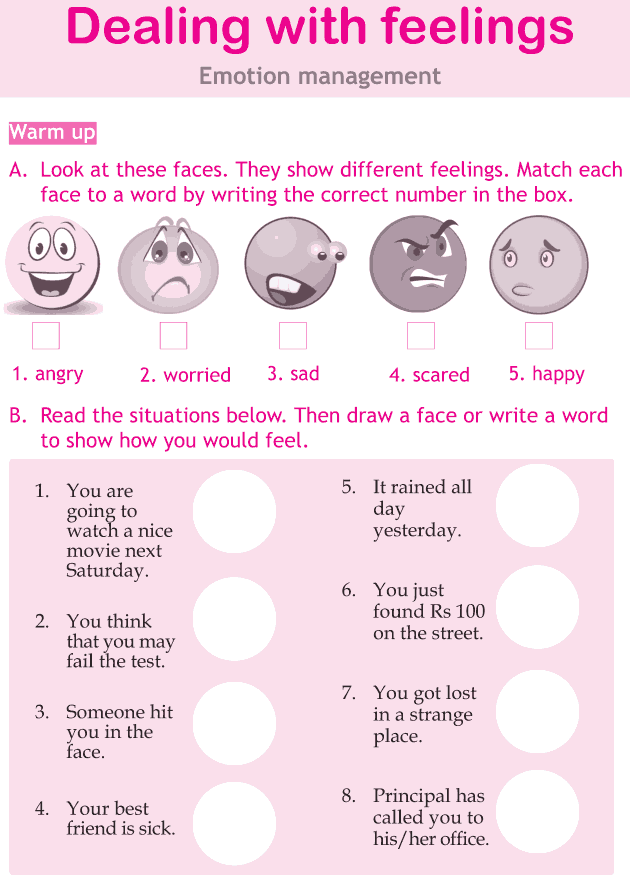 Journal of Personality and Social Psychology, 85(2), 348–362.
Journal of Personality and Social Psychology, 85(2), 348–362. - Grosse, G., Streubel, B., Gunzenhauser, C., & Saalbach, H. (2021). Let’s talk about emotions: The development of children’s emotion vocabulary from 4 to 11 years of age. Affective Science, 2(2), 150–162.
- Haidt, J. (2003). The moral emotions. Handbook of Affective Sciences, 11, 852–870.
- Heller, A. S., Shi, T. C., Ezie, C. E. C., Reneau, T. R., Baez, L. M., Gibbons, C. J., & Hartley, C. A. (2020). Association between real-world experiential diversity and positive affect relates to hippocampal–striatal functional connectivity. Nature Neuroscience, 23, 800–804.
- Henderson, P., Rosen, D., & Mascaro, N. (2007). Empirical study on the healing nature of mandalas. Psychology of Aesthetics, Creativity, and the Arts, 1(3), 148–154.
- Hiçdurmaz, D., Inci, F., Karahan, S. (2017). Predictors of mental health symptoms, automatic thoughts, and self-esteem among university students.
 Psychological Reports, 120(4), 650–669.
Psychological Reports, 120(4), 650–669. - Hofmann, S. G., Heering, S., Sawyer, A. T., & Asnaani, A. (2009). How to handle anxiety: The effects of reappraisal, acceptance, and suppression strategies on anxious arousal. Behaviour Research and Therapy, 47(5), 389–394.
- Ingram, R. E., & Wisnicki, K. S. (1988). Assessment of positive automatic cognition. Journal of Consulting and Clinical Psychology, 56(6), 898–902.
- Joormann, J., & Gotlib, I. H. (2010). Emotion regulation in depression: Relation to cognitive inhibition. Cognition & Emotion, 24(2), 281–298.
- Kabat-Zinn, J. (2005). Coming to our senses. Hyperion.
- Karremans, J. C., Van Lange, P. A. M., & Holland, R. W. (2005). Forgiveness and its associations with prosocial thinking, feeling, and doing beyond the relationship with the offender. Personality and Social Psychology Bulletin, 31(10), 1315–1326.
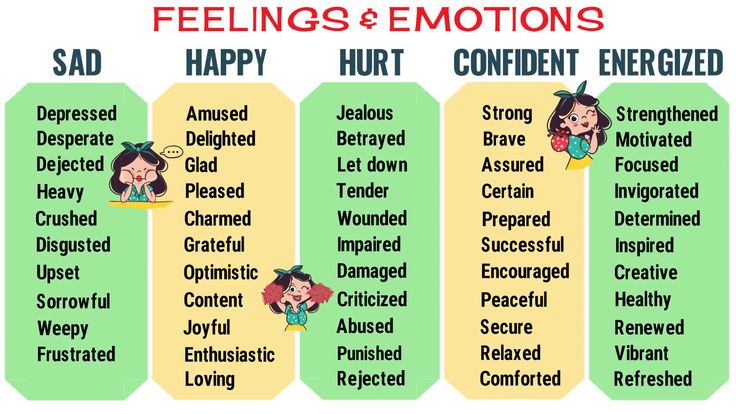
- Kimport, E. R., & Robbins, S. J. (2012). Efficacy of creative clay work for reducing negative mood: A randomized controlled trial. Art Therapy, 29(2), 74–79.
- Linehan, M. M. (2014). DBT skills training manual. Guilford Press.
- Lumber, R., Richardson, M., & Sheffield, D. (2017). Beyond knowing nature: Contact, emotion, compassion, meaning, and beauty are pathways to nature connection. PLOS One, 12(5).
- Malchiodi, C. (2012). Art therapy and health care. Guilford Press.
- McKee, A., David, S., Chaskalson, M., & Chussil, M. (2017, May 3). If you can’t empathize with your employees, you’d better learn to. Harvard Business Review. Retrieved September 2, 2020, from https://hbr.org/2016/11/if-you-cant-empathize-with-your-employees-youd-better-learn-to.
- McLachlan, D. A., Burgos, T., Honeycutt, H. K., Linam, E. H., Moneymaker, L. D., & Rathke, M. K. (2009). Emotion locomotion: Promoting the emotional health of elementary school children by recognizing emotions.
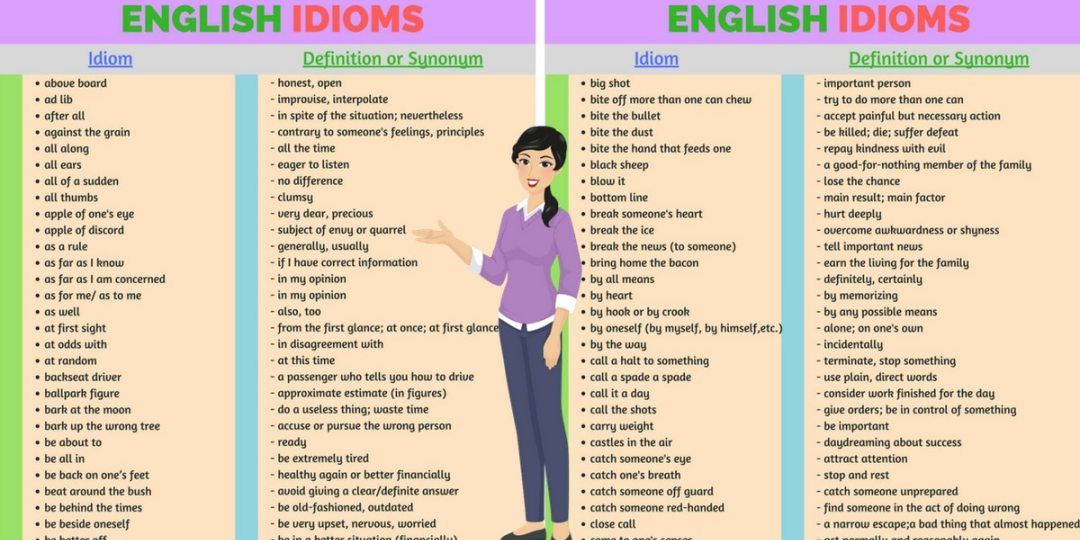 The Journal of School Nursing, 25(5), 373–381.
The Journal of School Nursing, 25(5), 373–381. - McNiff, S. (2004). Art heals. Shambhala Publications.
- Moreno, P., Wiley, J., & Stanton, A. (2017). Coping through emotional approach: The utility of processing and expressing emotions in response to stress. In C. R. Snyder, S. J. Lopez, L. M. Edwards, & S. C. Marques (Eds.), The Oxford handbook of positive psychology (3rd ed.). Oxford University Press.
- Nichols, M. (2009). The lost art of listening: How learning to listen can improve relationships. Guilford Press.
- Niederhoffer, K. G., & Pennebaker, J. W. (2009). Sharing one’s story: On the benefits of writing or talking about emotional experience. In S. J. Lopez & C. R. Snyder (Eds.) The Oxford handbook of positive psychology (2nd ed.) (pp. 621–632). Oxford University Press.
- O’Connell, B. H., O’Shea, D. O., & Gallagher, S. (2017). Feeling thanks and saying thanks: A randomized controlled trial examining if and how socially oriented gratitude journals work.
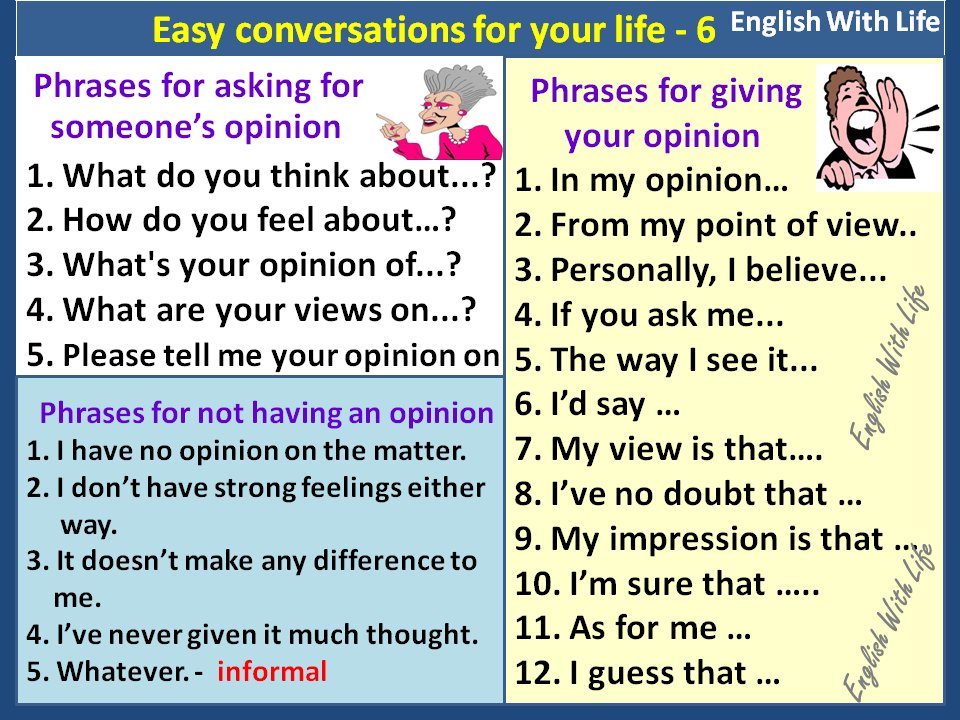 Journal of Clinical Psychology, 73(10), 1280–1300.
Journal of Clinical Psychology, 73(10), 1280–1300. - Quartana, P. J., & Burns, J. W. (2007). Painful consequences of anger suppression. Emotion, 7(2), 400–414.
- Roberton, T., Daffern, M., & Bucks, R. S. (2012). Emotion regulation and aggression. Aggression and Violent Behavior, 17(1), 72–82.
- Roberts, N. A., Levenson, R. W., & Gross, J. J. (2008). Cardiovascular costs of emotion suppression cross ethnic lines. International Journal of Psychophysiology, 70(1), 82–87.
- Seligman, M. E. P. (2006). Learned optimism: How to change your mind and your life. Vintage.
- Sholt, M., & Gavron, T., (2006). Therapeutic qualities of clay-work in art therapy and psychotherapy: A review. Art Therapy, 23(2), 66–72.
- Smolarski, K., Leone, K., & Robbins, S. J. (2015). Reducing negative mood through drawing: Comparing venting, positive expression, and tracing.
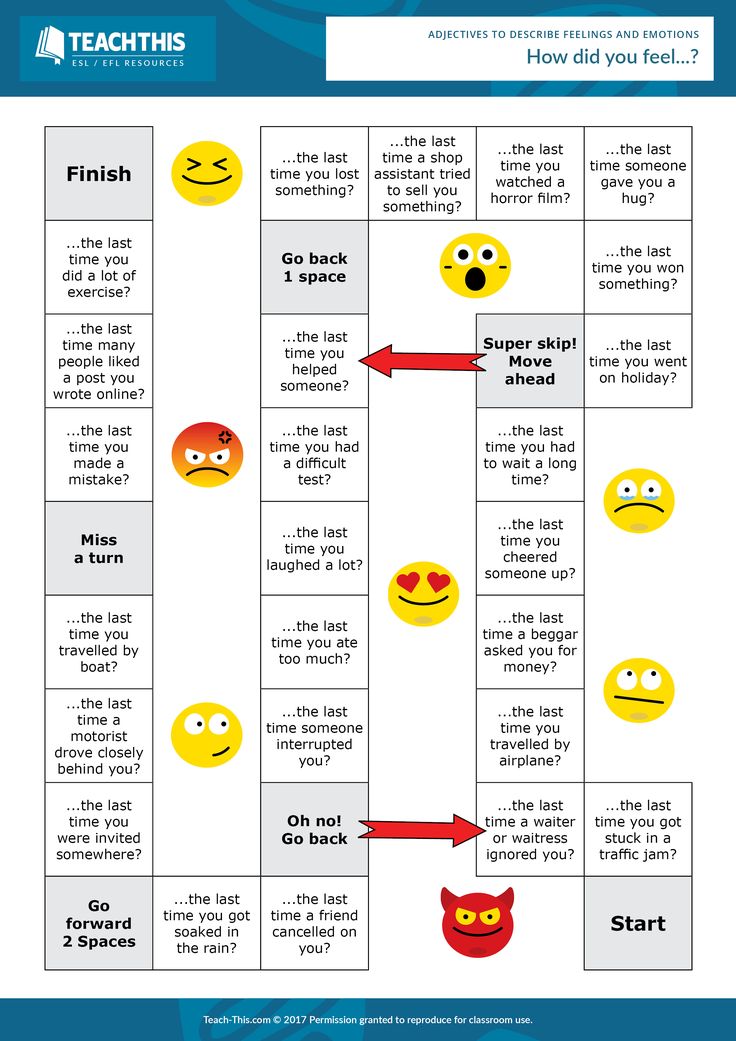 Art Therapy, 32(4), 197–201.
Art Therapy, 32(4), 197–201. - Smith, J. L. & Bryant, F. B. (2017). Savoring and wellbeing: Mapping the cognitive-emotional terrain of the happy mind. In M. Robinson & M. Eid (Eds.), The happy mind: Cognitive contributions to wellbeing. Springer.
- Stanton, A. L., Kirk, S. B., Cameron, C. L., & Danoff-Burg, S. (2000). Coping through emotional approach: Scale construction and validation. Journal of Personality and Social Psychology, 78(6), 1150–1169.
- Stellar, J. E., Gordon, A. M., Piff, P. K., Cordaro, D., Anderson, C. L., Bai, Y., Maruskin, L. A., & Keltner, D. (2017). Self-transcendent emotions and their social functions: Compassion, gratitude, and awe bind us to others through prosociality. Emotion Review, 9(3), 200–207.
- Streubel, B., Gunzenhauser, C., Grosse, G., & Saalbach, H. (2020). Emotion-specific vocabulary and its contribution to emotion understanding in 4- to 9-year-old children.
 Journal of Experimental Child Psychology, 193, 104790.
Journal of Experimental Child Psychology, 193, 104790. - Toussaint, L., Kamble, S., Marschall, J. C., & Duggi, D. B. (2015). The effects of brief prayer on the experience of forgiveness: An American and Indian comparison. International Journal of Psychology, 51(4), 288–295.
- Tull, M. T., Jakupcak, M., & Roemer, L. (2010). Emotion suppression: A preliminary experimental investigation of its immediate effects and role in subsequent reactivity to novel stimuli. Cognitive Behaviour Therapy, 39(2), 114–125.
How to openly express your feelings and emotions?
01/28/2019
Trust those people who can see three things in you: the sadness behind the smile, the love behind the anger, and the reason for your silence.
Svyatoslav Martinkevich
Everyone who contacts the Children's Helpline 8 800 2000 122 shares with us his feelings, which often cannot be expressed in completely different relationships with friends and relatives.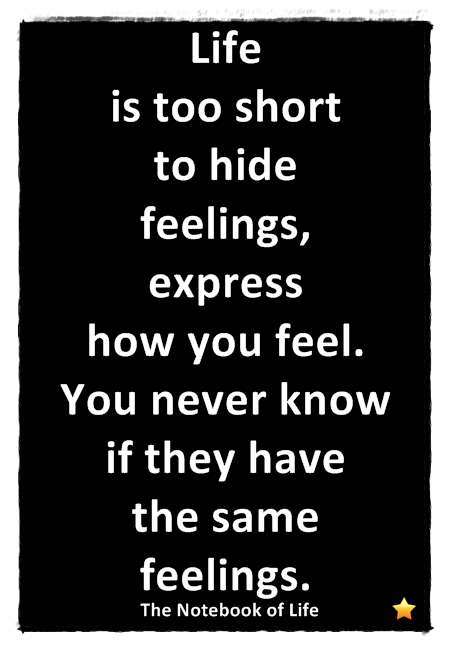 nine0003
nine0003
Shyness and fear of social evaluation, fear of rejection and humiliation prevent many people from getting rid of accumulated difficult feelings and emotions, speaking about their hurt and pain in conflict relationships, defending themselves in a situation of psychological pressure, confessing something close and frankly talking with them.
Overcoming shyness and learning to express feelings is quite a feasible task and the most important first step towards solving a problem, because getting rid of negative experiences, we always feel relieved and look differently even at the most difficult and seemingly insoluble situation. nine0003
In this life hack we will tell you why it is important not to suppress your feelings and emotions, how to openly express them and what are the ways to do it in a more comfortable and safe way for yourself and others.
How to release feelings and emotions to freedom?
- Practice speaking in front of a mirror or ask a close friend or relative to play the role of someone you like and want to confess your feelings to.
 Practice until you can easily pronounce the words. If you're going to write, jot down a draft. Edit it until the words start to sound the way you want. A conversation seems especially exciting when you want to confess your sympathy and love, perhaps you want to open up and share it in a love note or talk in person, here are phrases that will help you start your confession:
Practice until you can easily pronounce the words. If you're going to write, jot down a draft. Edit it until the words start to sound the way you want. A conversation seems especially exciting when you want to confess your sympathy and love, perhaps you want to open up and share it in a love note or talk in person, here are phrases that will help you start your confession: - If it's an important confession or a special conversation, you can rehearse what you want to say or write it down to be less anxious. Even if you plan to write about feelings, you will need to choose words that seem appropriate and understandable to the addressee.
- Think about how you want to express your feelings: tell the person face-to-face, over the phone, write a text or audio message, record a video confession or letter. nine0036
- If it is difficult to immediately express feelings and organize a conversation in order to share them, then for a start they can be written down in a diary.
 Look for patterns in what you write and pay attention to what feelings you experience more often and in what situations.
Look for patterns in what you write and pay attention to what feelings you experience more often and in what situations. - First of all, you need to conduct an internal dialogue with yourself and answer a few questions “What exactly do I feel? What emotions and feelings do I experience?”, “What situation or whose actions caused these feelings?”, “Do I feel it for a person or for the situation as a whole?”, “What do you want to do based on these feelings?”. For example, often irritation or anger serve as a signal that someone violated your boundaries and you did not have the courage to defend them. Anxiety and excitement often arise in situations where we are afraid of not living up to the expectations of others. Ask yourself: Whose expectations are you really trying so hard to live up to now? And why does deviating from this task become a disaster for you? Unexpressed resentment towards friends and parents often accumulates as a dangerous toxic substance in the body and causes not only complications in relationships, but also a deterioration in physical condition.
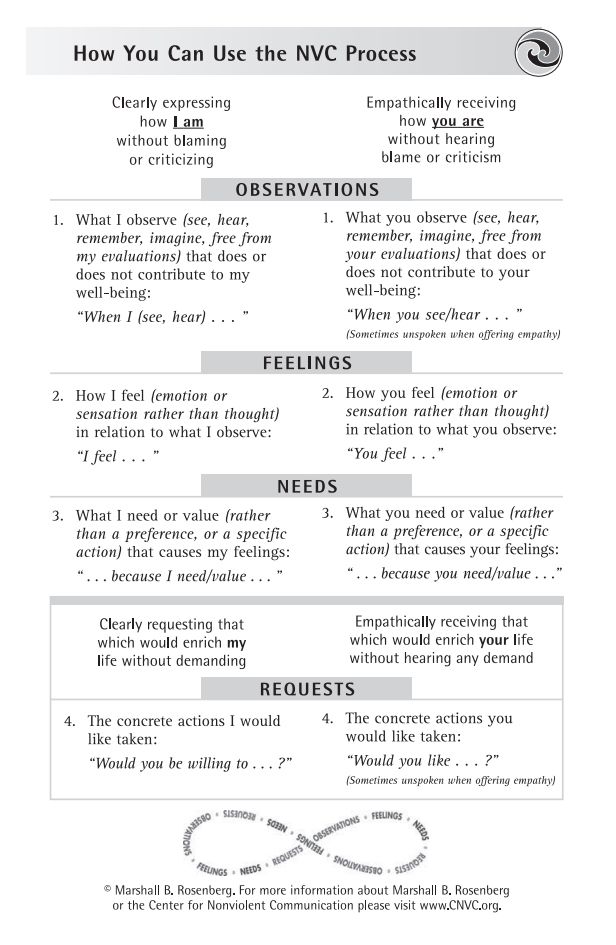 After all, regardless of who said what, it is you who reacts emotionally. The better you learn to understand your emotions, the easier it will be for you to deal with them and share them without fear and embarrassment. nine0036
After all, regardless of who said what, it is you who reacts emotionally. The better you learn to understand your emotions, the easier it will be for you to deal with them and share them without fear and embarrassment. nine0036 - If in any situation you have vivid and strong feelings, it is important to focus on them and before expressing them externally and putting them into words, it is important to accept and understand them inside yourself.
- Learn to accept yourself in different moods. It is impossible to always be cheerful and cheerful. Negative emotions make our life more diverse, they are an invaluable experience of internal maturation and rethinking of life.
- Disappointment and sadness when we cannot get what we want teach us to respect the choice of another person, accept the circumstances of the situation and find support within ourselves. This is a mandatory stage of your growing up, which is often stupidly ignored by the desire to see only the good in everything and avoid negative experiences.
 nine0036
nine0036 - Every feeling has a reason, meaning and teaches us something. When a person discovers that some of his needs cannot be satisfied, he experiences not only anger, but also sadness. It is she who allows you to realize that everything in life is governed not by the principle of pleasure, but by the principle of reality, that both you and the people around you have boundaries.
- “I enjoyed being your friend, but now I have to say that I feel more than just friendship for you. But I also feel…. nine0007
- “I'm so glad we're friends. You are a great friend. But I must confess that I no longer treat you only as a friend.
- “You may have noticed this already, but I like you. I've been sympathetic for a long time."
- “We have so much in common and I am very interested in you! I would like to take our relationship to the next level."
- I wanted to talk to you about what's going on between us… I feel….
 I would like to understand that…
I would like to understand that… - Before or after expressing your feelings, do not be afraid to ask about the feelings and emotional response of the person with whom you shared it or are going to share it: “How do you feel in this situation?”, “How do you feel after I told you this (-a), “Did you have similar feelings when ...”, “It caused me such feelings, but what do you have?”, “People do not like to talk about their feelings, although they know how important it is, and it becomes simpler. Maybe we can talk about it. What do you feel when or when…”, “I’ve plucked up / plucked up the courage to share what’s on my mind. I think it would be fair if you share yours in return. What do you feel?”
- Well, if you have a particularly exciting and difficult conversation, in which there is a risk of getting confused or unable to cope with your feelings and emotions, then use special techniques. Here are some of them!
Psychological techniques to help!
Recognizing feelings! “WHAT I FEEL NOW”
Try to name the feeling you are feeling right now as accurately as possible. Try to bring the feeling to the maximum - portray it in an exaggerated, even grotesque form. Then describe your feeling in detail or write it down in a diary. nine0003
Try to bring the feeling to the maximum - portray it in an exaggerated, even grotesque form. Then describe your feeling in detail or write it down in a diary. nine0003
Get ready to express your feelings and put them into words!
"Breathe and calm down"
When you are shy, start breathing exercises, but in a room with enough oxygen or better even in a ventilated room. This will allow you to calm down and focus on the current task, that is, on how to express your feelings.
- To calm down, inhale through your nose in four counts. Hold your breath for two counts. Exhale through your mouth for six counts. nine0036
- Inhale for four counts and exhale for four counts. Breathe through your nose. Repeat as many times as you need to calm down.
- You can try just exhaling longer than inhaling. This simple technique will help you relax without thinking about the score.
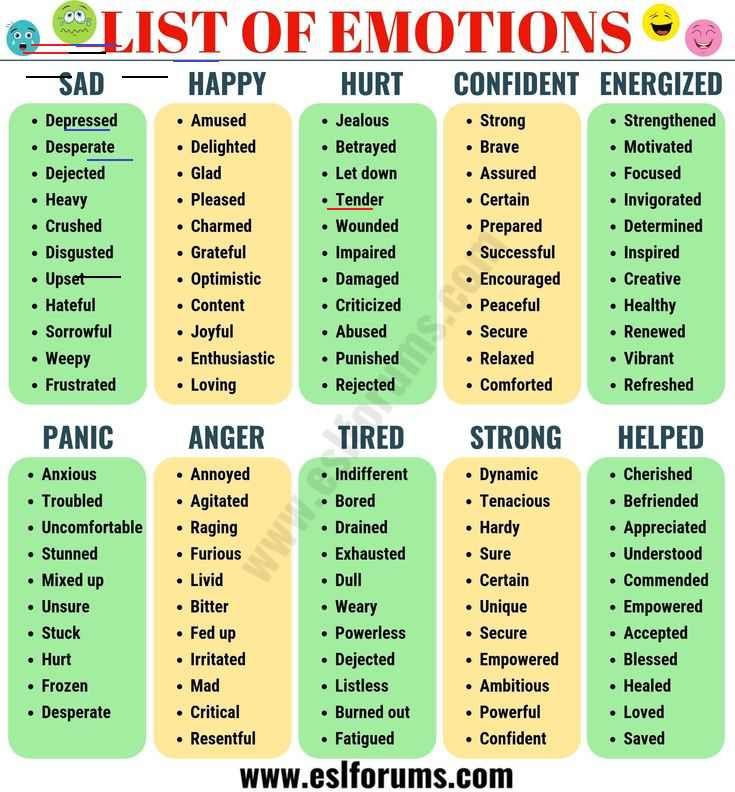
Technique of expressing one's feelings and one's position to reduce one's emotional tension and with a communication partner "I am a message".
In the most difficult and stressful situations, when you need to state your position, safely express your negative feelings and reach out to another, use the “I am the message” understanding communication technique. Try to talk more not in the language of "You", but more about your feelings, desires, needs and what each of you is ready to do to correct the situation. If one of you was able to restrain himself and acted at least a little more carefully and tried to make the conflict less painful - mark this and thank, indicating what was important for you and what changed at that moment. This is especially important when talking with parents.
- Begin the phrase with a description of your feelings in connection with the situation or human behavior.
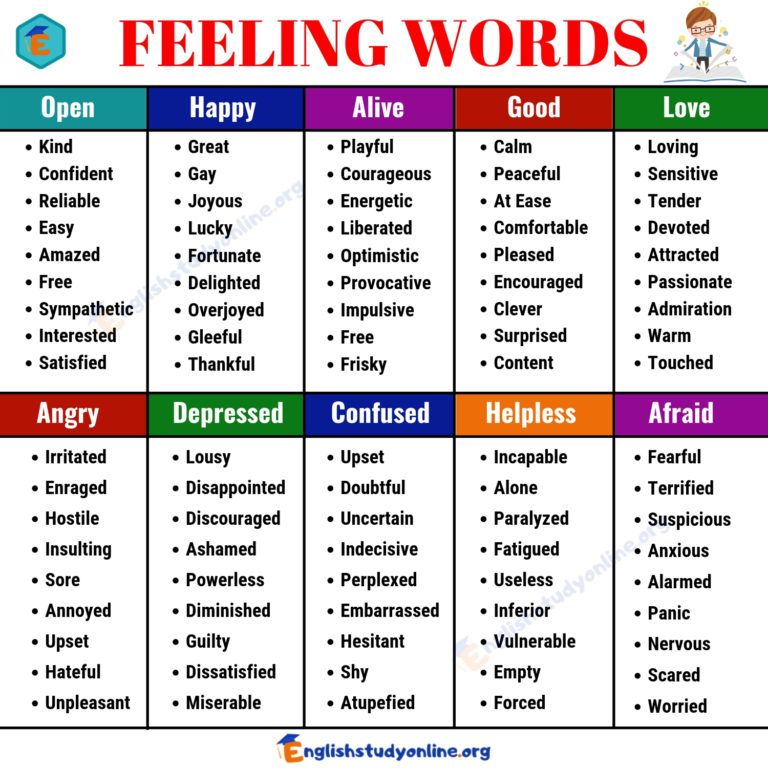 nine0008 For example: “I am upset”, “I am worried”, “I am upset”, “I am worried”, “I am angry”.
nine0008 For example: “I am upset”, “I am worried”, “I am upset”, “I am worried”, “I am angry”. - Next, describe only the direct fact of behavior or circumstances that do not suit you in the situation that happened. We emphasize that it is a fact without emotions or evaluation of a person as a person and his actions. For example, like this: "When you are late for an hour and do not warn me about it in advance ...".
- Then you need to explain what effect this behavior has on you or on others. nine0008 For example: “...because I have to stand at the entrance, get cold and I can get sick”, “...because I don’t know the reason for your being late”, “...because I have little time left to communicate with you”, etc. .
- In the final part of the phrase, you must state your wish, what kind of behavior you would like to see instead of the one that caused you discontent or grief. For example: "I would really like you to call me if you can't come on time.
 "
"
Using the technique " I-messages" requires some experience, because it is not always possible to quickly orient and restructure the phrase, but over time it will get better and better. The “I-messages” technique does not force the partner to defend himself, on the contrary, it invites him to dialogue, gives him the opportunity to express his opinion and leaves both participants in the dialogue a field for a calm dialogue.
| Beginning of phrase | What do we say next | Example |
| 1. I feel | Describe your feelings and emotions in simple terms | I am very upset (offended, angry, offended, angry) |
| 2.When | Name what exactly caused these feelings without your own interpretation, but just a fact | when you raise your voice at me / instead of start yelling at me |
| 3. | Tell me why it makes you feel this way and why it is important to you, how it affects you | because I'm beginning to think that my opinion means nothing to you |
| 4. I want you | Suggest what the other person should do or how you would like the situation to be resolved | I want you to first listen to my opinion until the end without interrupting, and then I will listen to yours calmly and without raising my voice |
| *** You can also add at the end why this is important for you and what benefits could be for your communication partner. nine0002 For example: “Because it is important for me that we have good relations and I am sure that after conflicts it is hard and unpleasant for each of us”
| ||
Speak what you feel without fear or apprehension, practice it and this will help you win the respect of others! After all, a person who always says what he feels and thinks makes the most convincing impression of a strong and self-confident personality. Gradually, frankness will become your habit, and it will be easier for you to deal with shyness. nine0008
Gradually, frankness will become your habit, and it will be easier for you to deal with shyness. nine0008
Remember that you can always call us and share everything that worries and worries, speak out and trust us with your even the most difficult feelings. And believe me, you will immediately feel better! Checked 8 million calls to 8 800 2000 122 .
Your Children's Helpline is nearby in difficult times!
Share on social networks:
Return to the list of articles
How to learn to express your feelings
94 149
Know YourselfAntistress
“For the first two years of marriage, my husband and I fought every now and then. Getting married, moving into a new apartment, having a baby - we had to adjust to these stresses. At first, we poured out the accumulated fatigue and anger in endless claims to each other, saying offensive and unpleasant things.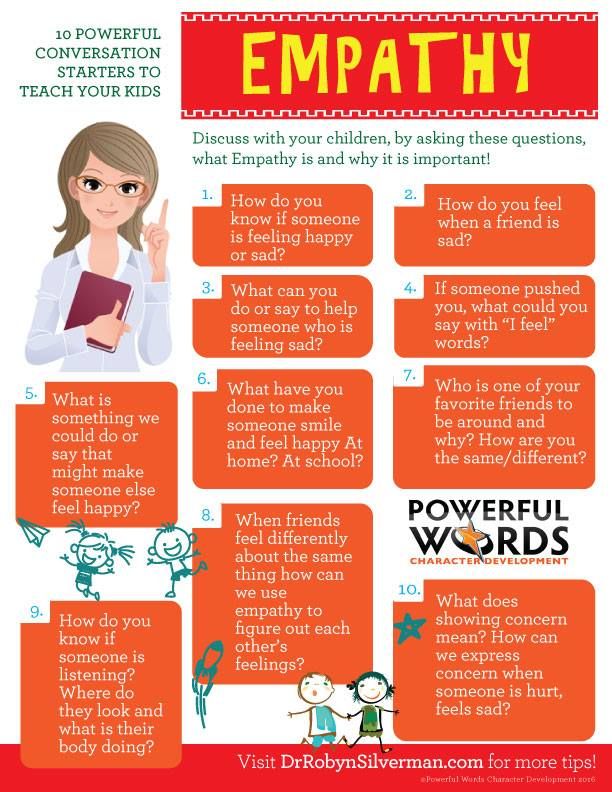 Once, in a fit of anger, I even broke a plate. At that moment, we both realized that we couldn’t continue to live like this - we need to learn to behave in a civilized manner and respect each other’s feelings,” 34-year-old Maria describes the situation that many young families go through with more or less success. nine0003
Once, in a fit of anger, I even broke a plate. At that moment, we both realized that we couldn’t continue to live like this - we need to learn to behave in a civilized manner and respect each other’s feelings,” 34-year-old Maria describes the situation that many young families go through with more or less success. nine0003
“After a few hours we calmed down, talked about what was going on, found the strength and wisdom to apologize to each other. Quarrels and conflicts have not completely disappeared from our lives, but new levers for controlling our mood have appeared. Since then, 8 years have passed. We have learned to speak.
At first, they discussed the problems that arose for several days, not finding a solution and a compromise, they were offended, but without shouting. The most interesting thing is that after a few days of talking, the subject of the dispute disappeared by itself. Now the periods of mutual insults have decreased to a few hours. Perhaps we suppress our feelings by leaving too much unsaid.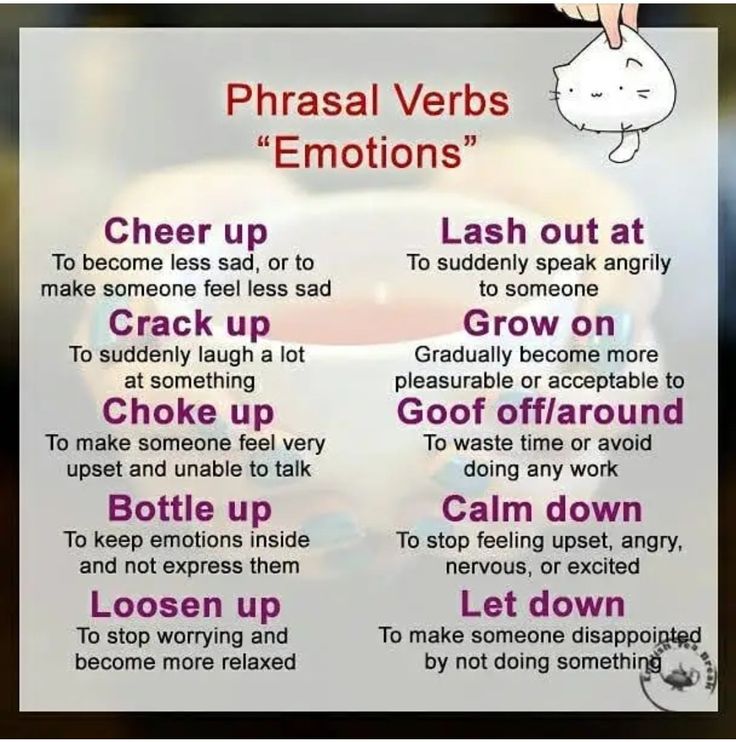 I prefer to think that we have learned to separate the main from the secondary and negotiate.” nine0003
I prefer to think that we have learned to separate the main from the secondary and negotiate.” nine0003
This example well illustrates a simple truth: we cannot influence what and how we feel, but an adult can control his mood and behavior. What to do with feelings - only we decide.
Identify the source
“You are experiencing a certain feeling for a very specific reason, and your task is to understand it,” says Joan Harvey, a psychologist at the University of Newcastle (UK). If you miss the cause and succumb to the flow of feelings, it can take you far from the shores of reality. nine0003
Often irritation or anger is a signal that someone has violated your boundaries, and you did not have the courage to defend them
Anger forces you to say or do stupid things, endangers you and others. Anxiety, fear, sadness can knock the ground out from under your feet and lead to depression, when you are not able to do even what you usually liked.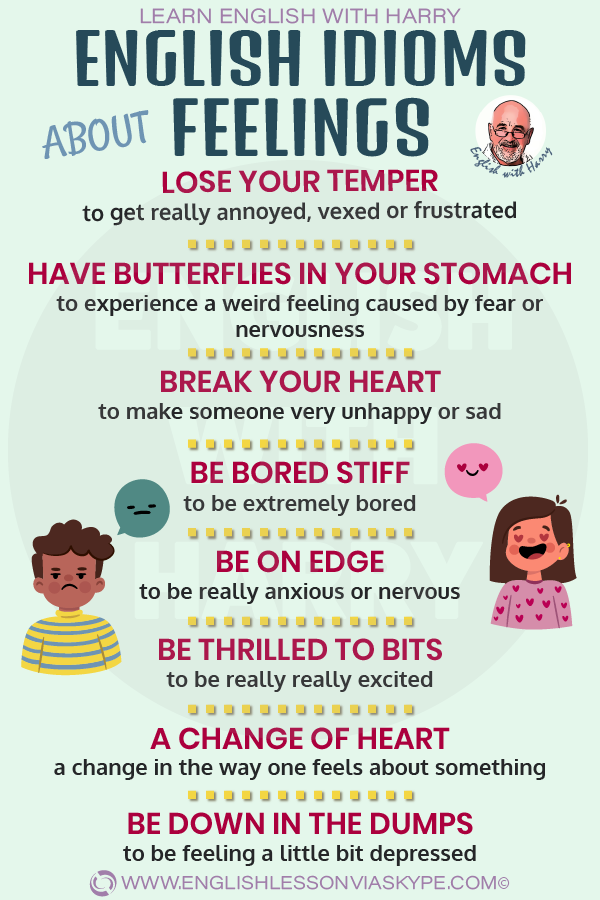 Bad mood reduces the defense mechanisms of your immune system.
Bad mood reduces the defense mechanisms of your immune system.
Ask yourself: what is going on? Why is this happening to me? When you are angry, anxious or sad, do you always understand the reason for your condition? Many don't even think about it. At best, their response is "I'm angry because he didn't do what I want", "I'm worried because I'm late for an important event." nine0003
This is a reaction to external circumstances or the behavior of other people, you did not go further, did not analyze your own experiences. After all, regardless of who said what, it is you who react emotionally. The better you learn to understand your emotions, the easier it will be for you to deal with them.
For example, irritation or anger is often a signal that someone has violated your boundaries, and you did not have the courage to defend them. Could not refuse someone to help, and then you feel overwhelmed and tired? Probably, fatigue here masks anger. If you allowed yourself to get angry well, you might not have to sacrifice your well-being.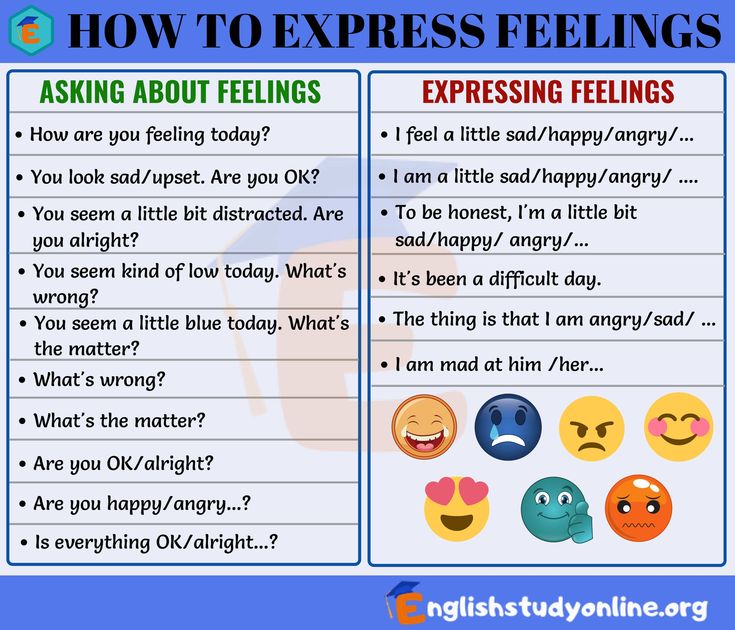 nine0003
nine0003
Anxiety and excitement often arise in situations where we are afraid of not living up to the expectations of others. Ask yourself: Whose expectations are you really trying so hard to live up to now? And why does deviating from this task become a disaster for you?
The Gift of Attention
Four years ago, Anna (now 37) found herself feeling guilty about her state of mind. “I was married, had two children, but I felt worthless, it seemed to me that I was wasting my life. I understood that my mood was a reaction to circumstances: an unloved job, problems with money, but I didn’t know what to do with it. ” nine0003
One day, the teacher of her youngest daughter asked Anna for a meeting - the girl often cried at school. “I was on the verge of despair and stopped noticing the good things in my life. But it’s even worse that I stopped noticing those closest to me - I completely lost sight of the condition of my children, ”she says.
This incident helped Anna to realize that she alone is responsible for her feelings.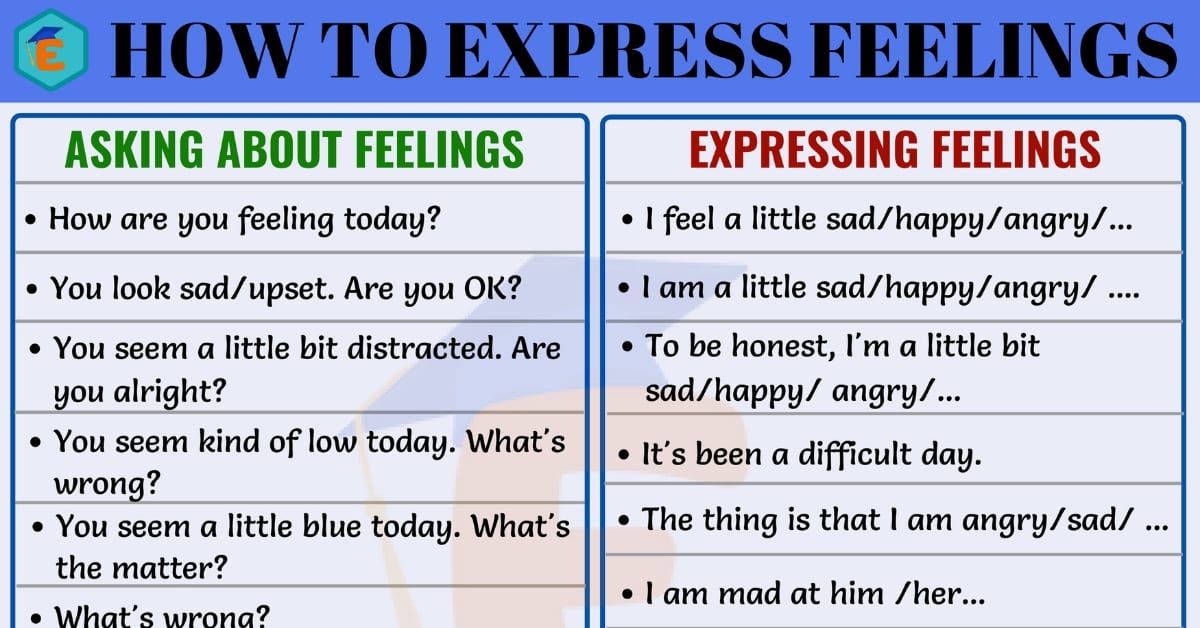 We must not wait for changes, but change ourselves. She learned to be more attentive to herself, her children and her husband, changed jobs and began to enjoy life more. nine0003
We must not wait for changes, but change ourselves. She learned to be more attentive to herself, her children and her husband, changed jobs and began to enjoy life more. nine0003
We cannot prevent unpleasant events, but we can change our attitude towards them. Fixing a feeling, giving it a name and a place within yourself is the first step towards gaining the ability to control your mood.
If something upsets you or makes you angry, it is important to let this feeling pass through your mind and try to understand its meaning. By formulating feelings on paper, you simultaneously pass them through consciousness and release them so that they do not accumulate inside. nine0003“The next step is an internal dialogue about feelings,” explains Willem Kaiken, head of the Exeter Psychology Center (UK). - Often we give feelings a logically incorrect assessment, it leads us into a dead end. Identify what unsettled you, and feel free to change the wording.
For example, a typical situation for motorists: you were cut off. You are scared, angry.
Anger is the hardest thing to control. It starts when we feel a threat to our health, self-esteem, dignity. Try to change the course of your thoughts, replace: “Who drives like that? He could have killed me..." to "Maybe he just didn't notice me or is too nervous today. In the end, everything worked out, no one was hurt." nine0003
To live and grow up
Every feeling has a reason, meaning and teaches us something. Psychoanalysts call this learning function "psychic structuring." When a person discovers that some of his needs cannot be satisfied, he experiences not only anger, but also sadness. It is she who allows you to realize that in life it is not the principle of pleasure that dominates, but the principle of reality, that both you and the people around you have boundaries.
Disappointment and sadness when we cannot get what we want teach us to respect the choice of another person and find support within ourselves.
This is a necessary stage of growing up, which is often ignored by the desire to see only the good in everything and avoid negative experiences. nine0003
Learn to accept yourself in different moods. It is impossible to always be cheerful - periods of sadness, disappointment, frustration are common to each of us. In addition to making our lives more diverse, they represent an invaluable experience of inner maturation and rethinking of life. So if you're wondering what to do with feelings, let them just be there first.
Text: Alexander Grigoriev Photo Source: Getty Images
New on site
“Adult daughter won't let me live with a man in our apartment”
Small dick energy: do men really compensate for small penises with expensive cars?
Why yoga is so popular: a big analysis
Four cases when the partner's accusations are unfair: men say
"Friday the 13th": why we are subject to superstition - a psychologist's opinion
"Everyone at work dumps their duties on me.
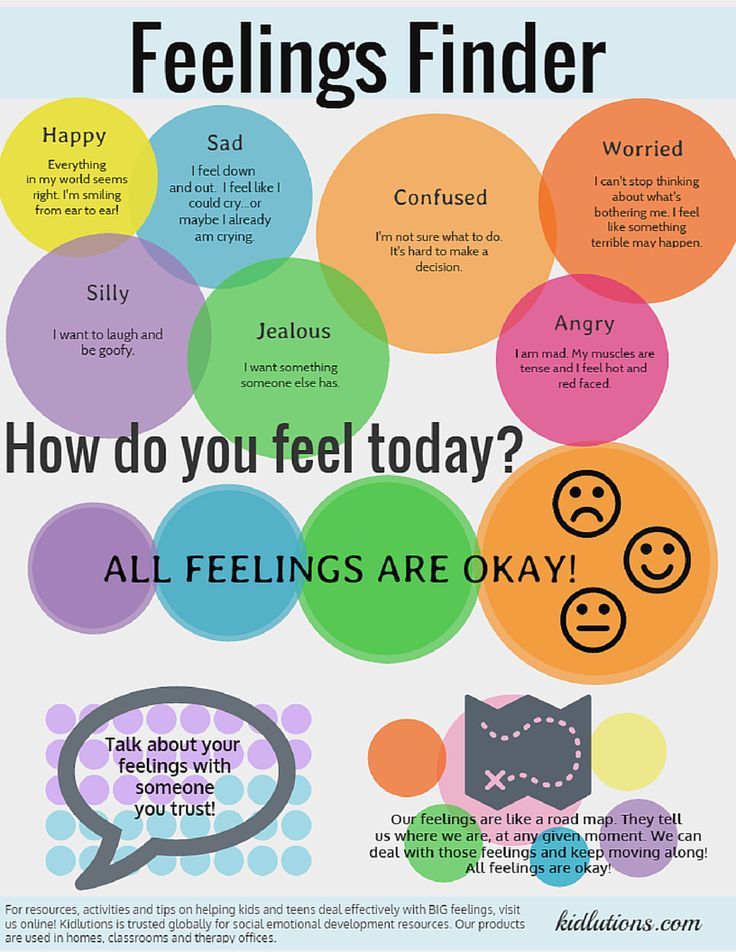
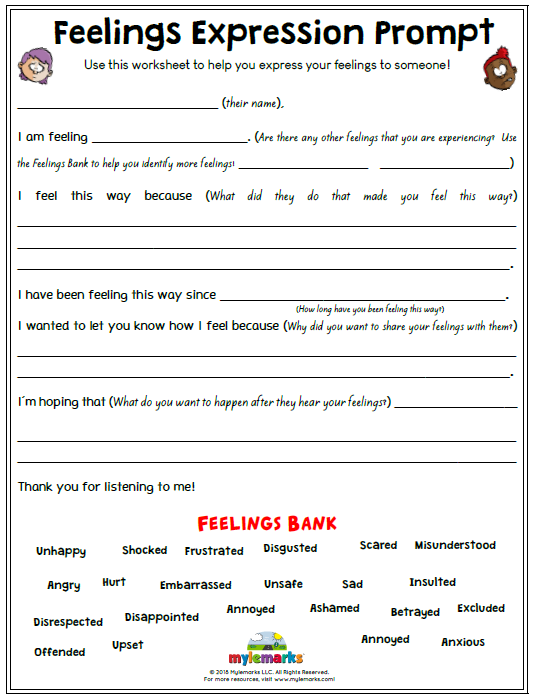 Because
Because 
